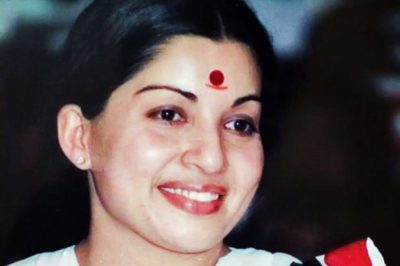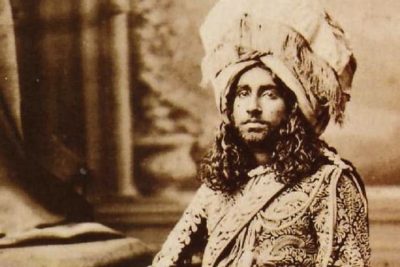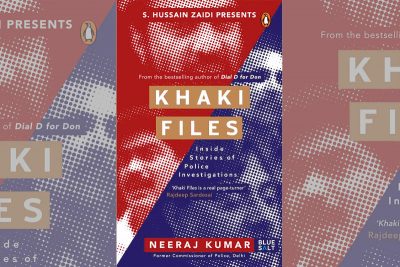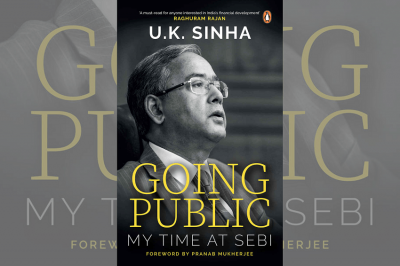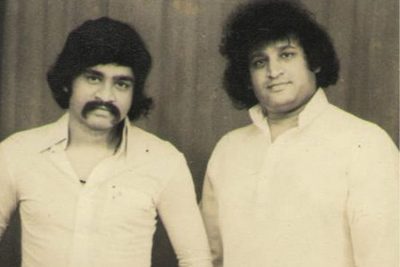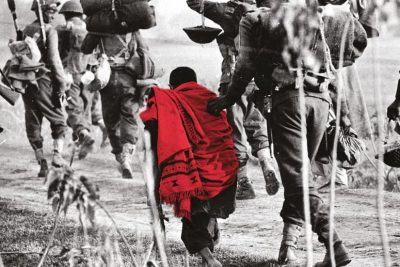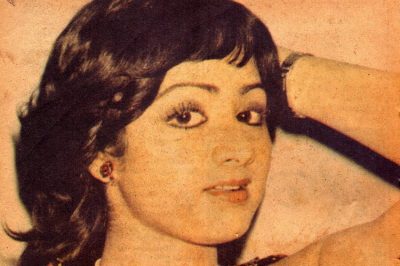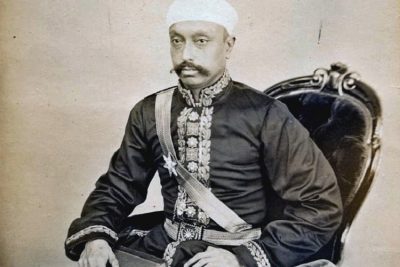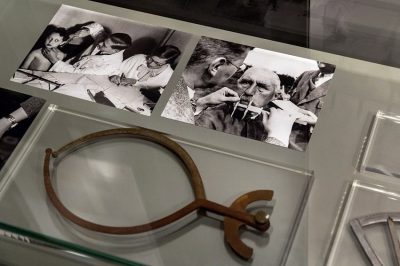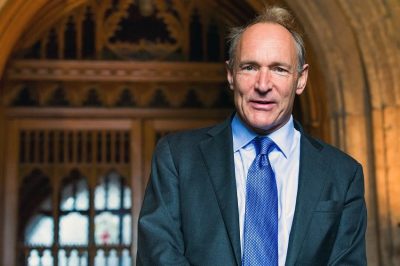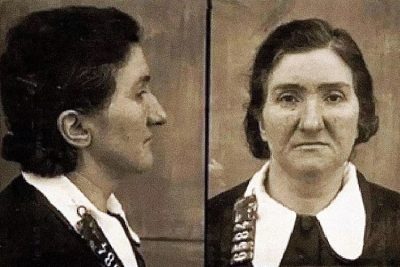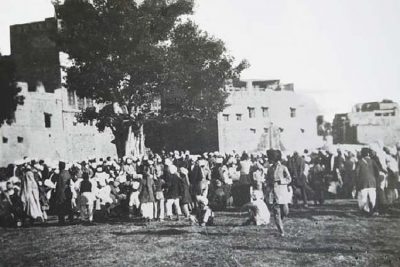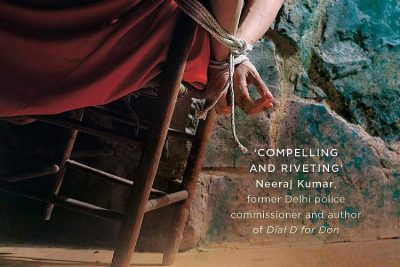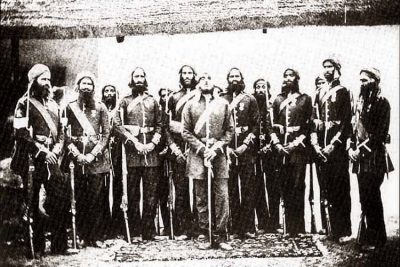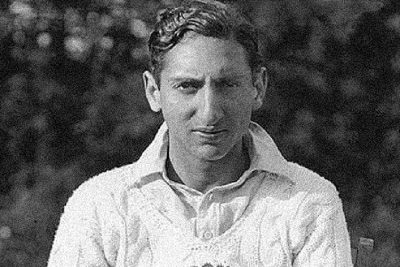The post Flood and Fury- Viju B’s Guide Through Nature’s Rage appeared first on .
]]> In August 2018 Kerala was hit by one of the worst floods the state has seen in hundred years. The state came to a standstill as the floods caused irreparable damage leaving 499 dead, 14 lakh evacuated and about 2.16 lakh houses damaged. Viju B. is a journalist from Kerala and writes on development, ecology and culture. In his book, Flood and Fury: Ecological Devastation of the Western Ghats, he analyses the shifts in the environment and ecosystem that led to the deluge and its after-effects.
In August 2018 Kerala was hit by one of the worst floods the state has seen in hundred years. The state came to a standstill as the floods caused irreparable damage leaving 499 dead, 14 lakh evacuated and about 2.16 lakh houses damaged. Viju B. is a journalist from Kerala and writes on development, ecology and culture. In his book, Flood and Fury: Ecological Devastation of the Western Ghats, he analyses the shifts in the environment and ecosystem that led to the deluge and its after-effects.
Viju B. surveyed the 1600 km length of the Western Ghats around the six states—Gujarat, Maharashtra, Goa, Karnataka, Tamil Nadu and Kerala, to study the implications of human activity and rapid urbanisation in the region. He writes man’s mundane existence and futility of his greed and selfish acts have destroyed the 35% of the original forests.

Aerial photo of 2018 Kerala floods. (Indian Navy/ Wikimedia Commons)
“My Journey along the eco-sensitive districts of the Western Ghats, especially in the backdrop of Kerala floods was intended to look at the big picture of what went wrong and attempt to understand the fragmented social, cultural and ecological links between communities and their immediate environments.”
The Western Ghats or the Sahyadri Ranges is an ecological miracle, older than the Himalayas and the Indian Civilization. These Ghats are the perennial water sources for six states along its length. Any damage to it will leave one-fourth of the Indian population on the brink of death due to thirst and starvation.
The exploitation of the Western Ghats—large scale mining, quarrying, deforestation and mismanaged water resources, has devastatingly impacted the climate and environment of the region. Further, it has also affected the marginalized communities, who are on the front line of these effects. The author argues, it’s high time their voice is heard and their methods—rooted in the wisdom of living with nature, are implemented to save what remains today of this ecological miracle.
“In their dogmas and myths there is always a respect and admiration for nature, which was seen as ‘backward’ in the march of economic progress and prosperity. These communities valued the eco-services provided by the rivers and forests precisely because their own lives depended directly on the existence of these ecosystems.”
In the book, he talks to people from all walks of lives, including people from tribal communities, ecologists, intellectuals, government officials, plantation labourers, migrants, etc. These conversations reaffirm the need to save the ecosystem and give a deep understanding of predicaments and consequences the Western Ghats now face.

Idukki is a district in the Indian state of Kerala. (Bhanu Khan/Pixabay)
In Idukki—a deep gorge in the heart of the southwestern coast known for its cardamom, tea, pepper and coffee plantations; he talked to Bhaskaran, who recalls the days leading up to the historic opening of the Cheruthoni Dam’s gates. The author adds heavy rains in the first week of August, prompted the Kerala State Electricity Board to open the shutters after twenty-six years. People’s joyous celebrations knew no bounds upon witnessing this historic moment.
Bhaskaran adds of the ominous air that loomed over the town despite the celebrations towards which the government had turned a blind eye.
“I felt that something really bad was going to happen on 7 August. The government had overlooked the fact that there was no river near the dam—it was all reclaimed land. In fact, Idukki today is dotted with buildings on steep slopes,”
Flood and Fury by Viju B is a comprehensive, interrogative read looking for a solution to protect the Western Ghats from further incorrigible destruction. He not only reports the climatic and social impacts the region has been subjected to over the years; but also talks about the apathy towards the coastal region by the state bodies and their inefficient measures to halt man-made interventions. And he further emphasizes the importance of the early and quick steps to mitigate these ecological calamities.
RELATED
The post Flood and Fury- Viju B’s Guide Through Nature’s Rage appeared first on .
]]>The post A Ballad Of Remittent Fever: Story of early 20th Century Calcutta Tackling a Pandemic appeared first on .
]]>
Anti-cholera vaccination being carried out by Waldemar Mordecai Wolffe Haffkine (1860-1930), Bacteriologist with the Government of India. (Wellcome Library)
I came away from the library, but not without a deeply realized truth—everyone in this family had a distinct task to keep them occupied. My mother, Madhu, Labanya, even little Punya; everyone, in short, except me. Therefore, I would have to step outside the house in search of work. And so, I did.
The educational institution where I had studied medicine had acquired a new name—Carmichael Medical College. By virtue of my status as a doctor with experience in the war, I found it easy to secure a job teaching students and looking after patients. I became busy, going to the hospital every morning and returning in the evening.
The college library was full of books and research papers. In the hours between teaching and examining patients, I would go to the library and read the sanitary commissioner’s reports. Attending to patients and perusing these reports clarified the picture as far as the health of the city’s inhabitants was concerned. Even after all these years, I do not find it cumbersome to recount the details from my memory.
The birth rate in the city was far lower than in the suburbs. Three reasons—males far outnumbered females in the city; there was a much larger number of temporary residents; among migrants, when women became pregnant, they were sent home for childbirth. Most births took place in the seven months between October and April, and, among these, the largest number in January. The five months between May and September had the least births, with June having the lowest numbers.
At every stage from childhood to old age, male deaths were higher than female. This was the conclusion from a study of the records of deaths over the past ten years. January, October, November, and December were the unhealthiest of months; February was the healthiest—such, at least, was the opinion of the sanitary commissioner.
One more observation, my own—just as the suburbs saw many more cases of fever than the city, there was a much higher incidence of cholera, diarrhoea, and dysentery in the city.
One evening I returned home to find my mother in bed.
‘At this hour?’ I was downcast.
‘What is the matter?’
‘Nothing very much,’ my mother said. ‘My throat hurts, I have a body ache too… Labanya was taking care of me, I forced her to go and rest…’
My mother was not one to take to her bed because of aches and pains. Her forehead was hot to the touch. On checking, she turned out to have a fever of a hundred-and-four degrees.
‘The fever is quite high. When did you get it?’
‘This afternoon…nothing to worry about, it always happens when the seasons change.’ Her eyes danced mischievously. ‘I was in need of some love…your father will not worry unless I take to my bed…’
I may have nodded with a smile, but there was no joy in seeing her languishing in bed. I had never known our Amodini debi to feel so sickly only because of a change of season. She was lying there, with one of the two electric lights in the room switched on. Her favourite retainer, whom I addressed as Nirmala mashi, was fanning her. Giving instructions for a cold compress, I went out to the veranda and sat down. The darkness had deepened; there was a carnival of stars in the sky. A full moon was bathing Ayutantric Bhaban generously with its beams. It was a most agreeable sight. Had the circumstances been different, I would have savoured this largesse of nature in solitude, but today I was not prepared for it.
Madhumadhabi, who had gone out to examine patients, returned home, as did my father. Both of them concluded that my mother’s affliction was nothing but a fever caused by a change of season. I was relieved to some extent.
The next morning, when I went into my mother’s room, I received a shock on seeing her. All her natural lustre was gone, sucked away by an ogress from a fairy tale. Her eyes were bloodshot. How had her condition deteriorated to such an extent? I examined her with care, using a stethoscope to gauge her breathing; it did not seem normal. I felt I could hear a rattle in her lungs.
My father came in soon afterwards to find out how my mother was. She had passed stools twice in the meantime. Standing by her bed, he frowned and looked at me.
‘It is not cholera, is it?’
‘It appears to be cholera…what is your opinion?’
I offered him the stethoscope without answering. ‘I hear a sound in the lungs, do you hear it?’
With another look in my direction he engaged himself in examining my mother’s breathing with great concentration. Then he said, ‘Hmm…on the one hand there are signs of cholera…and of bubonic plague on the other…she appears to have contracted both diseases…the lungs sound like a patient of pneumonia…’
Madhumadhabi entered the room. Throwing a glance at her, my father turned towards me. ‘What is your diagnosis?’ His eyes were boring into mine.
All at once it occurred to me what a strange comedy this was; the renowned doctor, Dwarikanath Ghoshal, was seeking my opinion.
I looked at him steadily. ‘This is neither cholera nor plague… this is Spanish flu…’
Lightning struck the room. My father gazed calmly upon my mother before leaving the room. When he returned shortly, it was obvious he was shaken to the core; the colours of life were fading before his very eyes. Even today I have not forgotten what he told me. The legendary medical luminary, Dr Dwarikanath Ghoshal, said, ‘You are probably right…no, no, you are right…go ahead, my son…’ He looked intensely at my mother for some time, a silent gaze that appeared to connect their hearts to each other. A smile of satisfaction appeared on my mother’s lips. My father’s eyes regained their usual meditative look; he left the room yet again.
 Excerpted with permission from A Ballad Of Remittent Fever, Ashoke Mukhopadhyay, translated from the Bengali by Arunava Sinha, Aleph Book Company.
Excerpted with permission from A Ballad Of Remittent Fever, Ashoke Mukhopadhyay, translated from the Bengali by Arunava Sinha, Aleph Book Company.
Do you have a story/photo for us?
We welcome your contribution at [email protected]. Please include your name, city, state, and country.
Fact Analysis:
STSTW Media strives to deliver accurate information through careful research. However, things can go wrong. If you find the above article inaccurate or biased, please let us know at [email protected].
RELATED
The post A Ballad Of Remittent Fever: Story of early 20th Century Calcutta Tackling a Pandemic appeared first on .
]]>The post Life and Times of a Policeman as told by Neeraj Kumar appeared first on .
]]>
Khaki Files- Inside Stories of Police Missions by Neeraj Kumar. (© Penguin Random House India)
Assam-born Sangeeta Barooah Pisharoty became the first ever female journalist from the Northeast to work on the forefront in covering news from the North-eastern states.
Neeraj Kumar is a retired Delhi Police Commissioner and has been greatly acclaimed for his writing in Dial D for Don. A book that gives an insight into the modus operandi of Central Bureau of Investigation against mafia rackets. After his well received first book, he’s back with another bestseller—Khaki Files: Inside Stories of Police Mission. Though the objective of the book— an insight into corruption remains same, this book dwells on police investigations against cases varying from lottery scams to cricket match-fixing scandals and to terrorist attacks.
In 37 years of Indian Police Service, Neeraj Kumar served as a DCP, DGP and CP. The book—Khaki Files is an account of his experiences of three decades. Kumar used this opportunity as a writer to highlight the diligence of the police force in busting criminal activities as he believes police officers carrying out important rackets and probes rarely get recognition.
“We are adept at police-bashing, but always fail to acknowledge their good work. Quite unconsciously, by telling these stories, I strive to bring their good work to the fore, for whatever it is worth.”

Neeraj Kumar as Commissioner of Delhi Police, 2012. (Phronesisindia / Wikimedia Commons)
The first case Kumar recalls is of the lottery scams around the country. A petty worker from Bihar fell into the trap of a deceitful organisation; spent days running to and forth between the bank and organisation to avail his prize money of 51 lakhs. His anxiety led him to the Crime Branch of Delhi, sensing foul play they took matters into their hands. As they started digging deep through the case, multiple people with similar fate came forward, some were scammed by organisations in Manipur and some by those in Andhra Pradesh.
Months of investigation resulted in pinpointing the corruption in the system and involvement of various departments of state government in these scams. Kumar writes around 55,000 crores of people’s money was swindled in the scam across the country.
“The figures were mind-boggling, and with hundreds of lotteries under operation with multiple daily draws in quite a few of them, the Crime Branch was sitting on the tip of an enormous iceberg. There was a lottery scam running across the country, cheating millions of people of their hard-earned money, and the Crime Branch had to do everything it could to stem the rot.”
The police action led the central and state governments to act against the con operators. As desperate times need desperate measures, the lottery operators sought respite in Supreme Court petitioning against the Delhi Police. Kumar writes of the extensive judicial process and the final judgement.
“The court took note of the cases we had investigated and appreciated the pioneering work we had done, much like a sustained campaign. In a far-reaching order, the court put a blanket ban on all private lotteries and declared only those that were run wholly by the government to be legal.”
In one of the subsequent chapters, Neeraj Kumar writes about his experience as a director general of prisons in Delhi. He was posted at the popular and infamous Tihar Jail in 2010. He writes, although the posting came as a shock and was laced with political manoeuvring it turned out to be a fulfilling and memorable tenure.
The author recollects his first few days as the director general and his surveillance of the prisons. He gives us an inside view into the life and strife of the prisoners inside the confinements. Tihar Jail, he writes, is well equipped in refining and reforming the convicts. The jail has its own garment making section and bakery run by the prisoners, the bakery products are sold in the market under the jail’s brand.
He writes, the environment of the jail was different than what he had perceived; the sight of the inmates working industriously baffled him.
“The preconceived notion of a prison, with convicts in their striped black and white uniforms hammering at rocks, controlled by ruthless jail staff, disappeared.”
Neeraj Kumar recognized the inmates working around the prison campus. These were the criminals he had ensured were put behind the bars for their misdoings. One of them, Manjeet Singh, was convicted of murder of an eminent advocate and a dear friend of the writer, Bawa Gurcharan Singh.
On confronting the convict and observing his immaculate behaviour, Kumar says, changed his outlook towards the criminals.
“I had begun to see things ‘from the other side’ and in a very different light. I had realized that there was much more to dealing with criminals than sending them to jail.”
On the whole, Khaki Files: Inside Stories of Police Missions is an autobiographical work. This book penned by Neeraj Kumar, gives us a new perspective of the lives of police personnel, different than the usual perspective depicted in movies. For a collection of true crime stories, Khaki Files a light and engaging read.
RELATED
The post Life and Times of a Policeman as told by Neeraj Kumar appeared first on .
]]>The post Saibal Dasgupta on Chinese Art of Trade and What India Can Learn from its Neighbours appeared first on .
]]>
A shop in the streets of Hong Kong, Kowloon, China. (Mstyslav Chernov / Wikimedia Commons)
Growth trajectories of India and China as developing nations are fairly similar. But over the years China has thrived to become the next global superpower, and India is yet to accomplish its goal of becoming the next China. Author and journalist, Saibal Dasgupta in his book Running with The Dragon- How India Should Do Business with China gives detailed yet concise knowhow of achieving the decade’s old dream.
Dasgupta has lived in China for years as a correspondent of the Times of India and has studied and explored the Chinese businesses and markets. He has used this knowledge to guide Indian businesses in setting a foothold in China and subsequently in the world. He presents each chapter in the book with case studies relevant to the topic discussed.
The author questions the readers regarding India’s average trade feat in China despite improved bilateral trades. Besides a handful of IT sector companies, Dasgupta writes Indian traders have not made their mark in China’s difficult yet an advantageous market.
“Barring a few companies, there is hardly any Indian brand presence in China. Few Indian firms have considered it worth their while to attempt this transition from presence to brand and most others think this is higher than the Great Wall to surmount.”
To climb this great wall, Dasgupta suggests traders to consider China a partner and not a rival. And emulate the Chinese expertise and approach of industrial trade to make a presence in the global market. Additionally, recommends testing the economic waters in China and acclimatizing with the industrial locale in the cities. Suggests, Indian Firms to make China their main domain by employing Mandarin-speaking staff. This could prove beneficial in the long term in not just setting up their base in China, but also expanding their businesses in neighbouring countries.
“Establishing factories and offices in China and building a team of experienced Chinese staff could help Indian companies reach out to several other countries where Mandarin is spoken and understood such as Vietnam, Indonesia and to some extent Malaysia.”
Dasgupta in his book speaks to businessmen who have learnt the art of Chinese trading and succeeded in making an impact in local markets there. They have established head offices in China rather than working remotely from India, which had negative impacts on their work earlier. These interviews give a clear understanding of trade functioning with advanced Chinese infrastructure and digital ecosystem unlike the difficult conditions back home in India.
“Some of the major challenges that bog down business or frighten investors in India are absent in today’s China although they existed two decades ago. Infrastructure is not a challenge any more. It is not just that transport facilities are easy and fast, but several other systems like payment mechanisms and the system of obtaining government approvals are digitalized and quick.”
Author, also sheds light on the opportunities present in various sectors, be it the healthcare, R&D, education and even the food industry. Education and healthcare, the author thinks, are India’s strong pursuits and thus India, following in the footsteps of educational giant NIIT, can provide cost-efficient educational programmes as alternatives to expensive courses from American-European competitors.
Saibal Dasgupta’s Book Running with The Dragon-How India Should Do Business with China gives a thoroughly researched and analysed insight into the working of China’s industrial market. Giving, an insider’s view into the market, he suggests Indian businessmen take a leaf out of their books and get a strong footing in China similar to their position in India with companies like Haier, Xiaomi etc. It is a well-structured and documented book with lessons for emerging business persons and policy makers. Written in a simple language, it’s an easy to read and understand book suited for anyone interested and not just for the corporate minds.
More about the book:
 Running with the Dragon- How India Should Do Business with China | By Saibal Dasgupta
Running with the Dragon- How India Should Do Business with China | By Saibal Dasgupta
RELATED
The post Saibal Dasgupta on Chinese Art of Trade and What India Can Learn from its Neighbours appeared first on .
]]>The post The Lone Empress— The Untold Story of Jayalalithaa, Iron Lady of Indian Politics by Vaasanthi appeared first on .
]]>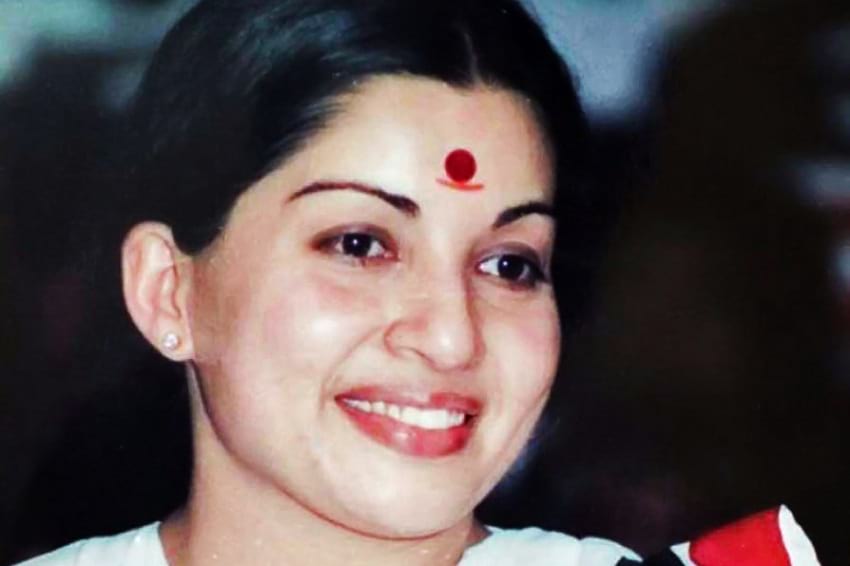
J. Jayalalithaa. (© Penguin Random House India)
India as a country is known for its reverence and cult following of public figures. Jayalalithaa Jayaraman popularly known as Jayalalithaa is one such flamboyant figure. An actor turned politician, she had an appeal and charm that captivated the hearts and minds of millions in the southern state of Tamil Nadu. Having served as a chief minister of the state six times in a period of fourteen years, Jayalalithaa was fondly referred to as Amma. She enjoyed a monopoly of power in state politics like no one else did and her life story is as fascinating as her personality. In the book The Lone Empress: A Portrait of Jayalalithaa, writer and journalist Vaasanthi looks into her life and tries to document the leader’s struggles on her journey up the ladder of success and fame.
“The story of Jayalalithaa, a former actress—Tamil cinema’s popular glamorous heroine of the early 1970s–turned tough politician—winning the hearts of millions of people, is one of the most extraordinary stories of Indian politics.”
The book begins with the leader’s tumultuous childhood; born in an affluent family in 1948, Jayalalithaa would not see the affluence for too long. Financial constraints over time and the early demise of her father landed the two-year-old Ammu, as she was called, with her mother and brother, at her maternal grandparents’ doorstep in Bangalore. The time she spent with her grandparents had a long lasting impact on Jayalalithaa’s life, writes the author. They continued to live in Bangalore until search for a better life led Veda, the leader’s mother, to Madras (now Chennai).
Her mother, Veda, born in a Brahmin family, was married at the young age of eleven, writes Vaasanthi. Being left alone to fend for herself and her kids, Veda accepted a lucrative offer in the film industry of Madras and became the star Sandhya. This, perhaps, paved a path Jayalalithaa would later embark on.
These chapters give us a personal glimpse into the charismatic leader’s life. From her life as a toddler to her academic brilliance as a school girl, and as daughter of a famed actor, we read through the revered politician’s life stages. Her mother’s fame left a void in her, as all the glory and success came at the cost of family time.
“Waiting for mother became a habit. Along with it grew disappointment and resentment. She hated the sight of film producers and actors who came to the house at odd hours.”
The author has taken the leader’s memoirs as a source to draw an intimate portrait. These memoirs give a peek into Jayalalithaa’s life, from waiting around for her mother to naively helping her senior “friend” from school. In her memoirs, Jayalalithaa writes regarding the latter incident, I realized what the word “betrayal” really meant. This not only gives a personal touch to the book, but also helps us understand the girl she was before becoming a greatly acclaimed actor and highly revered politician.
Having grown up under a film star, Jayalalithaa surprisingly had no inclination towards the film industry. The politician’s friend Srimathi, commenting on her academic choices and ambitions, says she had her eye on medicine or IAS. But, unfortunately, her desire for higher education was never understood. This, remarks Srimathi, was a waste of Jayalalithaa’s talent and intelligence.
Her destiny had different plans for her, and before she could join college, she was drawn into the vortex of film life. Although, she had received a scholarship for her brilliant performance in matriculation exams, she could not manage and balance studies and acting.
“At that point of time, she was extremely busy. She was acting in her first picture with MGR—the man who would irrevocably alter the course of her life, for better or for worse.”
MGR—the megastar and much-loved leader of his days, who would later become a chief minister of the state—mentored Jayalalithaa’s entry into politics. It was during his tenure as a chief minister that Jayalalithaa debuted as a politician in an AIADMK’s party conference in 1982. People gathered expecting to see a star, but were blown away by her fiery and eloquent articulation. MGR leveraged her entry into politics to win over the women voter base.

Jayalalithaa speaking during a conference, circa 1980. (Wikimedia Commons)
“Though women had always been swayed by him, with Jayalalithaa, even greater numbers were drawn to the conference. ‘It was the first time any political party in Tamil Nadu had succeeded in gaining the support of women in such a fashion,’ points out Panrutti Ramachandran, an MGR acolyte.”
In In June 1982, Jayalalithaa officially became a party member of AIADMK. Her move was anticipated with both keenness and hesitation; some thought she’d be a misfit and some knew Jayalalithaa was born to a be leader with her supreme intellect. Always drawn to serving and helping people, Jayalalithaa thought this could be her way to attain her long lost dream, as the time and chance to pursue education and a noble profession was long gone.
“It was her idea of ‘being of service to the people’ that made her think of joining politics, she said.”
The decision to join politics was a goodwilled and highly contemplated one. She knew what her decision would entail, says the author. Vaasanthi, writes about the actor’s pursuit of politics and the changes she had to undergo to de-glamourize her image. Her magnetic presence and appeal gathered large crowds, making the party favourable against the rival DMK.
“When MGR made her the party’s propaganda secretary, Jayalalithaa’s stature and importance grew manifold. She very consciously set about to ‘de-glamourize’ her appearance, perhaps in an attempt to wipe out the stigma attached to her as an actress.”
She worked diligently and did not limit herself to the campaigns, writes the author. She was as fierce behind the scenes as she was on the stage canvassing for her party. Her dedication to undo the lapses and wrongs in the administration of the party was commendable. Senior members of the party felt insecure with her pace and growing stature. And as hate campaigns brewed to malign her working, her fluency in English landed her at the Rajya Sabha as a Member of Parliament. This was just the beginning of her long political career.
The author and journalist Vaasanthi, then discusses about Jayalalithaa’s ordeals as a party member of AIADMK. Her popularity and functioning as an MP ruffled a few feathers in the party and it was soon divided into anti and pro Jayalalithaa houses. This was one of the many hurdles she had to cross to become the leader we know of today.
“Jayalalithaa’s story proves how difficult it is for a woman, facing odds and bereft of political pedigree, to survive in Indian politics. It is also a story, therefore, of how a woman tries to transform herself to survive in a male-dominated society.”
The book The Lone Empress seeks to tell a story of a charismatic leader, a leader adored and revered like no one else before. Vaasanthi, with her gripping style and narrative, hooks the reader till the last page. The much anticipated and waited portrait of Jayalalithaa fully satisfies the reader’s desire to know more about her. Drawing on Jayalalithaa’s memoirs, and interviews with her friends and colleagues, the book makes for an interesting and delicate read.
 The Lone Empress- A Portrait of Jayalalithaa | By Vaasanthi
The Lone Empress- A Portrait of Jayalalithaa | By Vaasanthi
“My book was a journalist’s attempt to understand the enigmatic persona of the most colourful, dynamic and determined woman politician that Tamil Nadu, nay, India has ever seen. –Vaasanthi”
RELATED
The post The Lone Empress— The Untold Story of Jayalalithaa, Iron Lady of Indian Politics by Vaasanthi appeared first on .
]]>The post A Peek Into The Dark Times That Befell Assam and Its Effect on the Modern-Day State appeared first on .
]]>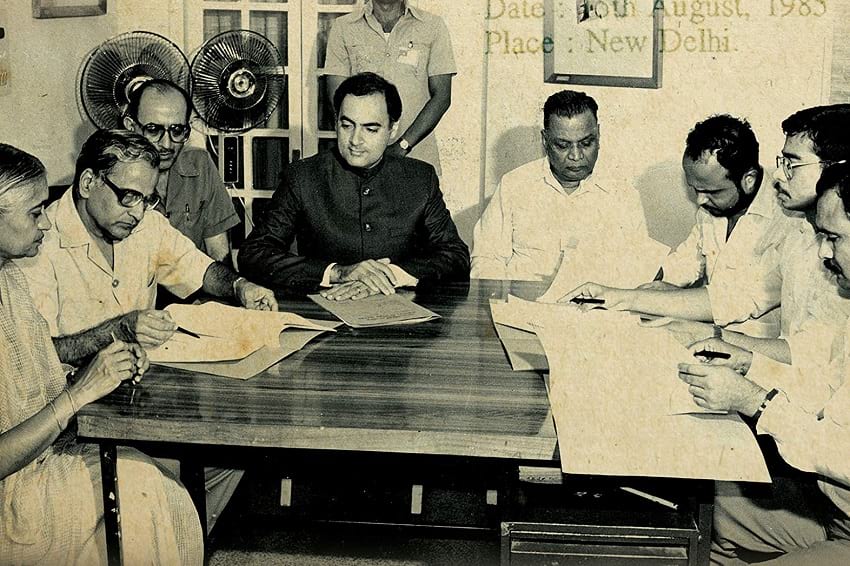
Assam- The Accord, The Discord. (© Penguin Random House India)
Assam-born Sangeeta Barooah Pisharoty became the first ever female journalist from the Northeast to work on the forefront in covering news from the North-eastern states. Having won several awards for her in-depth reportage over the years on matters related to the states, Sangeeta Barooah Pisharoty turned her attention to penning a book. Assam – The Accord, The Discord is a first-hand account of her own experiences and memories of the signing of the Assam Accord of 1985, which as per her narration, came with its own fair share of negatives.
In her debut book, she mentions how the signing of the Assam Accord left the state in terrible times. The insurgency was at its peak, streets witnessed bloody wars, the political scenario was in disarray. And common people had no choice but to flee Assam in search of a better future. In conversation with Biraj Sarma, one of the key players of the Assam Accord, the author gives a detailed account of the past – the signing of the Memorandum of Settlement (MoS) and how it affected the present – updating of the National Register of Citizens (NRC) and the controversial amendment to the Citizenship Amendment Act.
The Beginning
In the year 1985, when the author was in school, the Punjab Accord had just been signed in July. It was only a matter of time before Assam got its share of the limelight, for which student bodies and local parishads were quite stirred up in the state. Although none knew what the Accord would entail or how it would assure the Assamese regarding preservation and protection of their culture and identity.
When the author met Biraj Sarma, one of the three key signatories of the Assam Accord of August 1985, she realized all the efforts of the students’ agitation – the Assam Movement – were not very easy to come by.

Students rally during the Assam Movement, 1985. (Wikimedia Commons)
A picture on the wall of Sarma’s home, which has now come to be associated with the signing of the MoS, took both the author and Biraj Sarma back in time.
While the then Indian Prime Minister Rajiv Gandhi looked excitedly at the All Assam Students’ Union (AASU) general secretary, receiving the signed copy of the Accord from the Union Home Secretary, members of the All Assam Gana Sangram Parishad (AAGSP), seemingly looked confounded.
Special Indian Air Force planes had picked up members of the AASU and AAGSP from Guwahati a few hours before the Accord was to be signed. Another IAF flight brought in executive members of the student body late in the evening of August 14, 1985.
“On 13 August, all the executive members of AASU and AAGSP were hurriedly summoned to Delhi by the Union home ministry to hold ‘a detailed and broad based discussion on the Assam problem.”
The Disagreement
After the Accord was signed and the signatories returned to the guest house with the final draft, not everything went well between the AASU and AAGSP members. Some disagreed with a particular clause mentioned in the draft. The clause read, in an exclusive provision for the state, it would segregate foreign nationals from Indians living in Assam before March 24, 1971. Although their original demand was 1951, as per the NRC that would determine who the citizens of Assam actually were. Heated argument also ensued amongst the group regarding no clear promise from the central government on scrapping of the Illegal Migrants (Determination Tribunal) (IMDT) Act. However, key AASU members made sure there was no more scope for negotiation.
“[Union home secretary] R.D. Pradhan told us that the government couldn’t scrap an Act passed by Parliament just like that, but it will try to create a political consensus for its removal…”
While deliberations went on and some of the members opposed the final draft. It was said that the central government had agreed to provide an Indian Institute of Technology (IIT) in Guwahati, along with a central university.
“Did we agitate for six years for an IIT and a central university?”
Much later, amidst games of hide and seek, the group went to the Prime Minister’s residence settling for the fact that it was the best possible deal and that there was no more time to waste on this matter.
“…Officials, ‘kept putting pressure’ on them throughout the day on 14 August to somehow arrive at an agreement since Prime Minister Gandhi had decided to announce the Accord in his Independence Day speech at the Red Fort the next morning.”
A Dent in the State
After the Assam Accord was signed and PM addressed the nation the next day, the Assamese felt liberated as the old dream of autonomy and civil liberties over their homeland was achieved. But while many cheered the decision, minority groups rose up in shock and anger.
“…What particularly infuriated them was the Centre’s approval of 1966 as the base year for citizenship enumeration in the state. As per Clause 5 (2) of the Accord, the names of those foreigners who entered Assam after 1 January 1966 and up to 24 March 1971, ‘shall be deleted in accordance with the provisions of the Foreigners’ Act, 1946…”
Seed of Dissent
As minority groups kept protesting, AASU demanded the revaluation of the electoral rolls, which had names of thousands of foreign nationals (of Bangladeshi origin), that they originally wanted to weed out in their demand for revision before the General Elections of 1980. In one of his speeches, the then Chief Election Commissioner (CEC) S. L. Shakhder mentioned how foreign nationals were largely and improperly included in the electoral rolls, particularly in the North East, thereby enraging the people.
“…People of East Bengal lineage – both Hindu and Muslim –they intended to make Assam a part of their extended Bengali homeland by negating local language and culture…”
Another reason for Assam‘s rage was that, while the hill tribes of other north-eastern states were protected under the Constitution, the people of Assam were overlooked. Also, the non-Congress leaders were under the impression—Congress took calculated risks to have a voter base constituting illegal immigrants from the other side of Assam’s border. This led to further issues in the state and discord crept up in the parties.
As the book progresses further, the author narrates Prafulla Kumar Mahanta ‘s journey to becoming the youngest and the most controversial Chief Minister of Assam and how his two tenures resulted in some of the toughest times in the state. Assam – The Accord, The Discord also looks at the six-year-long agitation against illegal immigrants that gave rise to the recent uproar on the NRC in Assam, the essence of which was the deportation of people, who failed to prove their Indian citizenship.
Sangeeta Barooah Pisharoty’s book is a detailed account of what made Assam the state it is today and is a perfect page-turner.
More about the book:
 Assam- The Accord, The Discord | By Sangeeta Barooah Pisharoty
Assam- The Accord, The Discord | By Sangeeta Barooah Pisharoty
RELATED
The post A Peek Into The Dark Times That Befell Assam and Its Effect on the Modern-Day State appeared first on .
]]>The post Going Public: A Guide to the Wild World of Securities and Investments appeared first on .
]]>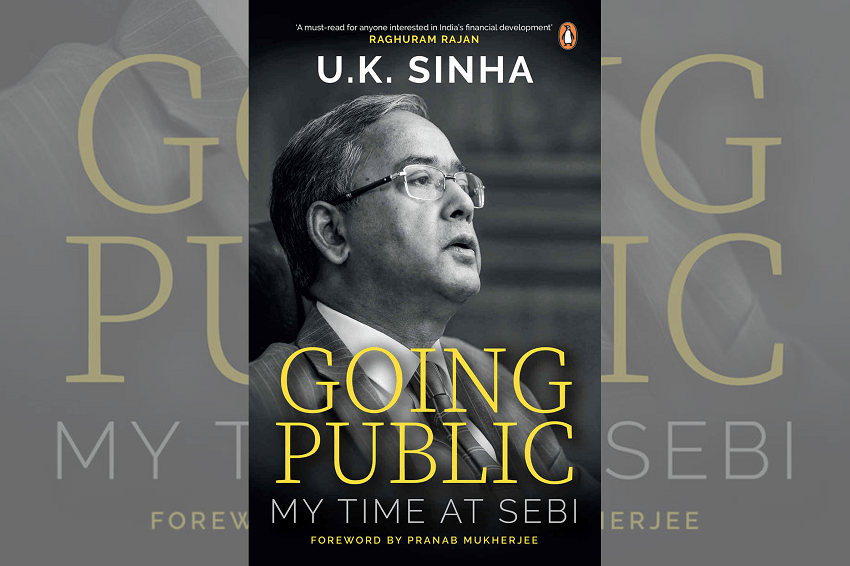
Going Public book cover. (© Penguin Random House India)
Remember the heady days of Harshad Mehta turning share market upside down? His protégé Ketan Parekh following in his footsteps? The stock market crash in the early nineties? Going Public written by Upendra Kumar Sinha, the former chairman of Securities and Exchange Board of India (SEBI) is a window to that period, and much more.
“Since I had a lot of free time on my hands, I prepared a comprehensive evaluation of different interventions and proposed structural changes, which others at this desk had not cared to do in the past.”
As a Managing Director of Bihar State Credit and Investment Corporation Ltd (BICICO), in 1989 and Joint Secretary (Banking) in 2000, U K Sinha got grounded on how public funds were monitored by the state administration. Transformation of ICICI bank into a universal bank was his first landmark achievement. In July 2002, he took over as Joint Secretary – Capital markets. In Oct 2005 he took over as chairman of Unit trust of India Asset management company (UTI AMC), and had a hands on feel of how the mutual fund schemes of UTI, in which investors and reposed great faith, collapse all of a sudden.
“Thus, when the crisis developed in 2001, it came to light that the government had no mechanism for timely and first-hand knowledge.”
The first thing that the author noticed was lackadaisical state control on the regulatory bodies. There was no mechanism in place for a timely warning of a crisis in a financial institution. UTI had strayed into activities inconsistent with its core competence; this couldn’t be spotted in time. So, for better control on the securities market, the SEBI (Securities and Exchange Board of India) Act was amended time and again to plug existing loopholes.
“…destiny had planned my deep and intensive association with UTI in multiple capacities.”
The author’s appointment to UTI AMC and his subsequent joining of SEBI was challenged by a slew of Public Interest litigations (PILs). Petitioners alleged that Mr Sinha was working closely with two finance ministers, and hence couldn’t be trusted to protect the interest of common investors. But the author came clean on all allegations.
“…the general principle of post economic reforms (was) that the government should distance itself from day-to-day running of financial institutions.”
The author feels that financial literacy in India is extremely poor. That’s why a common man can be easily taken for a ride. A multiplicity of regulatory authorities, and jargon of rule book, makes it difficult even for the highly educated to gauge the veracity of saving schemes. Hitches that follow the transfer of power after the general elections add to the burden of regulatory bodies, affecting the common man.
“a statutory SEBI could not be created until 1992. It required a Harshad Mehta scam ……”
The focus of the book is later shifted towards the long drawn out, and yet to be concluded, case of the Sahara group. The group had raised money from the public in gross violation of the law. Following this disclosure, SEBI directed 2 companies of this group to refund the money of around 3 crore investors. With Sahara group defying SEBI directions, the matter went to court. Supreme Court, in 2012, ruled in favour of SEBI.
“During the Ketan Parekh scam, it was discovered that some Indian corporates and operators in the market took their ill-gotten wealth out of the country and used the same money to invest in companies through the PN route, thereby manipulating the market.”
Sahara was asked to deposit related records and documents in 10 days’ time, i.e. by 10th September 2012. These were sent to SEBI office in a truckload on the 10th, at 8 PM. SEBI office had closed by that time, hence the truckload was not received. Dodging tactics of Sahara continued. Their investors were flocking to branch offices, hence they were forced to pay them directly, said the Sahara group. SEBI took exception to this and filed another petition in Supreme Court.
“In the nineties, SEBI was new and still evolving, and relatively inexperienced.”
The unauthorized collection of public money in India was at its peak in 1990. Accordingly, the government, the regulators, geared up for course correction. However, the entire money collected by the unscrupulous houses hasn’t been returned to the investors. This calls for a serious debate on the subject and a pan India drive to educate investors.
The book is a treat for the seasoned investors and a guide for those not-so-well acquainted with share market and the working of the financial institutions.
RELATED
The post Going Public: A Guide to the Wild World of Securities and Investments appeared first on .
]]>The post Sixteen Stormy Days- The Story of the First Amendment to the Constitution of India by Tripurdaman Singh appeared first on .
]]>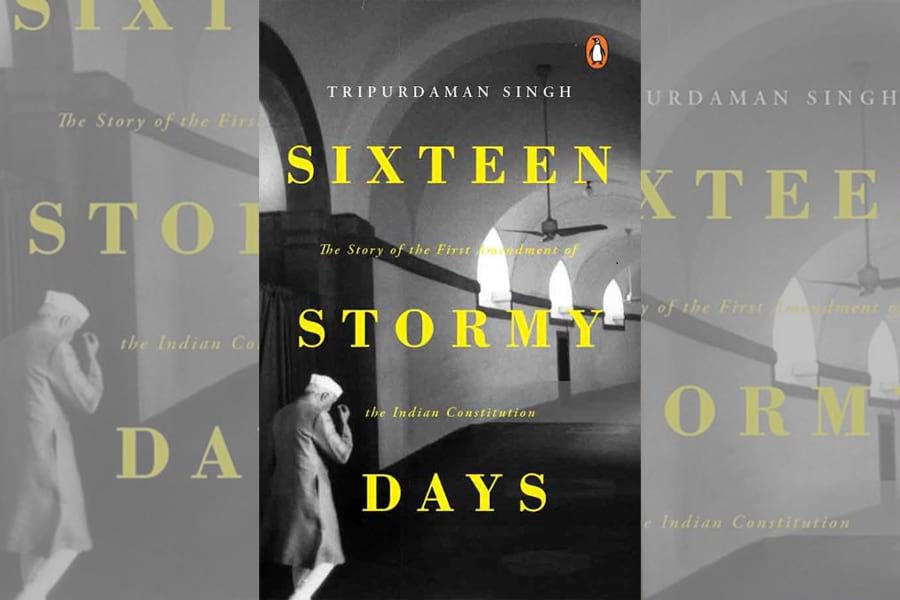 Amendment to the Constitution of a newly built democracy could be a stride towards advancement or deterioration, depending on the nature of the reform. One such reform was the Land Reform, promised by the freshly formed Government of India to its people. And this is the core issue discussed by Tripurdaman Singh, in his book ‘Sixteen Stormy Days’.
Amendment to the Constitution of a newly built democracy could be a stride towards advancement or deterioration, depending on the nature of the reform. One such reform was the Land Reform, promised by the freshly formed Government of India to its people. And this is the core issue discussed by Tripurdaman Singh, in his book ‘Sixteen Stormy Days’.
“The amount of freedom of expression that is allowed or indulged in by the press can hardly be exceeded in any country in the world. I shall be quite frank with you. Much that appears because of that freedom seems to me exceedingly dangerous from many points of view. Nevertheless, I have no doubt in my mind that the freedom of the press from the larger point of view, is an essential attribute of the democratic process.” ― Jawaharlal Nehru
Initial hurdle in the implementation of the reform was the delaying of Bihar Land Reforms Act by the judiciary, and another trouble was brewing up. The Zamindari Abolition and Land Reforms Bill were placed in the UP Legislative Assembly on 10 January 1950. It was opposed tooth and nail by the Democratic Party – the splinter group of congress. The Bill was hastily revised and got approved by the President, Dr. Rajendra Prasad, on 24th Jan’ 1950. Congress projected it as a victory for the farming community. But, more than 4000 Zamindars took the matter to court, calling it an infringement on Fundamental Rights.
“The new republican government, much like its colonial predecessor, was finding it excruciatingly difficult to function within constitutional bounds”
The Maharaja of Balrampur and Kapurthala, P R Das, deposed that the ‘state policy’ couldn’t be treated as ‘public purpose’. Nor could the assent of the President change ‘unconstitutional’ to ‘constitutional’. The Allahabad Court ruled that the properties couldn’t be vested in state till disposal of all petitions put up against the ‘Act’. This was a huge setback for the Congress. A meeting of Congress working committee was held on 25th Jan’ 1950 in New Delhi.
“Sardar Patel had interpreted Nehru’s conception of his own role as prime minister to be ‘wholly opposed to a democratic and cabinet system of government’.”
Nehru said that parliament represented the will of people and must have a way unbridled by the press and the Judiciary. Ironically, ‘constitutional validity’ of the proposed law was never challenged by the court. It only pressed for legal procedures to run their course. But Nehru’s view, the slow-moving procedures were a drag on democracy, prevailed. And the task of amending constitution began in right earnest.
“In this way, Mukherjee concluded, the government would be able to both draw up legislation imposing restrictions on fundamental rights, and preclude the need to justify the reasonableness of such legislation before the courts.”
A 14th Feb 1951 press release described it a benign exploratory exercise. Press was playing on falsehood and indecency, Nehru said. Some issues of national importance, he added, aught to be immunized to judicial view. So, Article 13 on fundamental rights, and article 14 on equality before the law, must be fine-tuned in line with social reforms.
“Instead, on 26 January 1951, India awoke to the headline ‘Zamindari Abolition in UP Stayed: Allahabad High Court Issues Injunctions.”
On 12 March 1951, the Patna high court declared Bihar Land Reforms Act as unconstitutional. The Bihar government’s argument that it had the president’s approval, was rejected.
This was another setback that would delay the manifestation of the reform. Ambedkar sympathized with Nehru and felt that amendment could be carried out for speedy execution of state policy. Constitution, finally, would bend to peoples’ will.
“Nehru had been told by several members in no uncertain terms that to attract more people to the Congress, it was imperative that the government implemented the party’s social and economic programmes. Zamindari abolition and land reform were a critical part of this programme, the central pillar of its social and economic agenda.”
The Calcutta high court in the meanwhile ruled that the government must pay for the acquired property as per the existing market rates, and not arbitrarily. Retaining the word ‘reasonable’ in Article 19 was mooted. The word ‘reasonable’, attached to liberties, felt Congress, would be a hurdle as judiciary may have a different view of what is ‘reasonable’.
The book is racy without missing on significant details of the story. Now that India has had a total of 103 amendments to its constitution, it is fascinating to know how the ball was set rolling. Tripurdaman Singh with Sixteen Stormy Days makes the early days of Indian Republic come alive with deep insight. A must-read for intellectuals, as well as the common man.
RELATED
The post Sixteen Stormy Days- The Story of the First Amendment to the Constitution of India by Tripurdaman Singh appeared first on .
]]>The post Anabel Loyd’s New Book ‘Bahawalpur’ Documents the ‘Rise and Fall of a Glorious British India Princely State appeared first on .
]]>Conversing with Salahuddin Abbasi, grandson of Bahawalpur’s last ruler, the author brings forth the legends and stories associated with the prosperous kingdom.
Initial setbacks for newly-formed Pakistan
In her book, the author mentions the troubling times that fell on Pakistan, post its traumatic separation from India in 1947. Its coffers ran dry and not enough cash was available to pay the new employees that took positions in offices.
“When the new finance minister arrived in his new office in Karachi, the capital of his new country, on 15 August 1947, he found nothing there except one table. The treasury was almost as bare.”
Although Pakistan was to receive Rs 750 million from New Delhi, it ran into immediate debt with no money to pay its army for months. In desperate times, Muhammad Ali Jinnah turned to the Nizam of Hyderabad for help, who had already loaned him Rs 200 million. Jinnah’s close connection with the Nawab of Bahawalpur further yielded Rs 70 million, as a gift to the new State.
“All the salaries of government departments for one month were also met by Bahawalpur. Given Penderel Moon’s concerns about the Bahawalpur state finances, it seems likely that much of the funding was supplied from the Nawab’s personal wealth, or from the confluence that had been of such concern to the British authorities in the past, where state and royal treasuries merged. For a brief period of independence, Bahawalpur was the gift that kept on giving, until it disappeared.”
Prosperous times during Bahawalpur’s reign
When Jinnah set up the States and Frontier Regions Ministry in 1948, most of the officers serving in bureaucratic positions prior to partition became governors and commissioners of the princely states. But the accession of these feudatory states into new Pakistan and appointing prime ministers was not an easy task.
“The British, we know, had latterly been particularly keen to have a hand on, if not a hand in, appointments in Bahawalpur, to safeguard their financial interest in the state. The Pakistan government equally wished to exercise a level of control over any state.”
There was a tussle between the British and Pakistan to govern over Bahawalpur as it was the proverbial goose that laid golden eggs. When the princely state finally merged into the country, its wealth was spent on good causes. Either Bahawalpur’s treasury or the Nawab himself funded free education, healthcare and scholarships. During Bahawalpur’s blossoming existence, the literacy rate in Pakistan was the highest.

Nawab Mohammad Bahawal Khan Abbasi V Bahadur, the 11th Nawab of Bahawalpur. (Wikimedia Commons)
Tougher times ahead
When the chief secretary to the Government of North-West Frontier Province, Sir John Dring was appointed as prime minister of Bahawalpur, it gave way to chaos. Permanent Secretary at SAFRON, Lt. Shah, expressed his displeasure at Dring’s working in a letter addressed to the Prime Minister of Pakistan, Liaquat Ali Khan. He complained,
“Unfortunately he has still not reconciled himself completely to the fact that the British rule has gone and that we meant to do our work in our own way.”
While Dring was closely attached to the Nawab’s cause, Lt. Shah had his own plans. He wanted the people of Bahawalpur to support the government and thus render the Nawab to a puppet carrying out constitutional duties. State assembly elections in May 1949 in Bahawalpur further pushed the Nawab in the pits. The Muslim League had a clean sweep, which gave the central government easy access to implement reforms in 1951.
“In addition to reiterating the nawab’s role as ruler, the four articles of the agreement limited the money the nawab could withdraw from the state treasury for personal use, required him to provide an inventory of his property to the government, and allowed the royal family to retain their titles in exchange for a government guarantee ‘that the method of appointing the heir to the throne shall be in accordance of the laid down rules and traditions of the State.”
As the book progresses further, Loyd explores Bahawalpur through the standpoint of Sadiq Mohammad Abbasi’s grandson Salahuddin Abbasi, who reminisces the good times he spent with his brother during his formative years.

Sadeq Mohammad Khan V at the age of 15. He became the Nawab of Bahawalpur State at the age of three after his father’s death. (IWM Collections)
“They had their own private room with bathroom and two servants in adjacent accommodation. They were close enough to the swimming pool to sneak out for a cooling swim in the hot weather, and there were Saturday afternoon bicycle excursions to the cinema in Lahore. They enjoyed themselves…”
Salahuddin also narrates the harsh times that befell the kingdom after the last ruler’s demise. And how the government of Pakistan began meddling with its heritage.
“He had grown up the dutiful son of one strong man, later to be used by others whom he had little power to resist. On the contrary, it appeared imperative to work with and for the leaders of his country if he was to save what he could of the Bahawalpur heritage…”
The author also comments how the kingdom was eventually torn between the new ruling forces at the centre,
“Between President Ayub Khan and President Asif Zardari, a lot of the hopes of the people of Pakistan as well as the lifeblood of the former state of Bahawalpur had drained away.”
Anabel Loyd’s ‘Bahawalpur – The Kingdom That Vanished’ gives a detailed account of downfall of a flourishing princely state. She paints a clearer picture of the stressful times in Bahawalpur and Pakistan’s efforts to keep the state’s rich legacy under wraps. Loyd’s thorough research and Abbasi’s personal touch make it an interesting read.
More about the book:

Bahawalpur- The Kingdom that Vanished | By Anabel Loyd
RELATED
The post Anabel Loyd’s New Book ‘Bahawalpur’ Documents the ‘Rise and Fall of a Glorious British India Princely State appeared first on .
]]>The post Newly Released Book The Panama Papers Unveil the Indian Side of the Biggest Global Corruption Scandal appeared first on .
]]>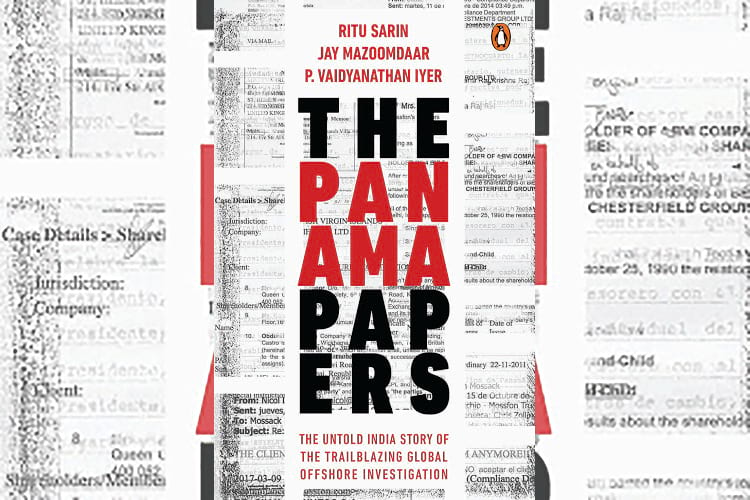 Panama Papers was the culmination of a long and international journalistic investigation. In this rare expose, 2.6 terabytes of data of tax evasion by the rich and their illegal accounts to cover up suspicious business dealings were leaked into public forums. By implicating the rich and the famous in India, the disclosures sent shock waves rippling throughout the length and breadth of the country. The reactions of the Indian government and public, plus the actions taken are explored in the book The Panama Papers, by the three senior journalists—Ritu Sarin, Jay Mazoomdaar, and P. Vaidyanathan Iyer—who were at the forefront of bringing this to the eyes of the Indian Public.
Panama Papers was the culmination of a long and international journalistic investigation. In this rare expose, 2.6 terabytes of data of tax evasion by the rich and their illegal accounts to cover up suspicious business dealings were leaked into public forums. By implicating the rich and the famous in India, the disclosures sent shock waves rippling throughout the length and breadth of the country. The reactions of the Indian government and public, plus the actions taken are explored in the book The Panama Papers, by the three senior journalists—Ritu Sarin, Jay Mazoomdaar, and P. Vaidyanathan Iyer—who were at the forefront of bringing this to the eyes of the Indian Public.
The Reaction of the Modi government
The issues of reining in corruption and curtailing black money had stumped previous Indian governments, but there was an expectation that things would be different when Narendra Modi stepped in as Prime Minister.
“On its first day in office and at the very first cabinet meeting on 27 May 2014, the government had announced that it would constitute a Special Investigating Team (SIT) ‘to implement the decision of the Honorable Supreme Court on large amounts of money stashed abroad by evading taxes or generated through unlawful activities’.”
After the Panama Papers were released worldwide on 5 April 2015, the Modi government swung into action to set up an exclusive probe team to trace undisclosed offshore investments. As per a statement issued by the finance ministry, the Multi Agency (MAG) was to include:
“…officers from Investigative Unit of CBDT (Central Board of Direct Taxes), FIU (Financial Intelligence Unit) and FT & TR (Foreign Tax and Tax Research) division and representative of RBI (Reserve Bank of India).”
Meanwhile, the three Indian Express journalists began giving TV interviews—including one to Ravish Kumar—about their nine-month-long investigation. They also conducted an hour-long AMA on Reddit, and, a month later, participated in an off-the-record two-hour event to acquaint 200 of the newspaper’s readers about the Panama Papers. Additionally, separately, they gave talks at student gatherings, plenary sessions, and conferences in India and abroad.
Public reaction was mixed. Many people were outraged and angrily demanded that action be taken against the 500 Indian citizens that the Panama Papers had revealed to have illegal offshore investments. Others received the news with jaded scepticism and said that this government, like the ones before it, would do precisely nothing.
Tax Sleuths Take Action
The book also covers how the tax authorities in India began to investigate and take action against many of the people named in the Panama Papers. They also sent out feelers for international cooperation. On 13 April 2016, director level officer from India’s CBDT attended an OECD (Organization for Economic Cooperation and Development) meeting in Paris.
“At the Paris meet, a coordination plan was formulated under the aegis of the Joint International Tax Shelter Information & Collaboration Network (JITSIC), which itself is tasked with responding to global tax-compliance issues and ensuring fast and effective information exchange between tax administrations.”
The tax sleuths in India sent the named Indians detailed questionnaires about their offshore investments, and then began raiding their residences and offices. They also sent official notices to NRIs named in the investigation and requested tax authorities for information in other countries with whom India had tax treaties. They then filed prosecutions in Indian courts under the Income Tax Act and the Black Money Act provisions.
“…RTI reply received from the Ministry of Finance by Ritu in June 2019 revealed that the ‘undisclosed investments’ traced in the Panama Papers case had gone up to a whopping Rs 1564 crore.”
Nevertheless, many people were left disappointed by the secrecy in the search operations and prosecutions. The income tax department, the Enforcement Directorate (ED), and the MAG did not make any of the names public.
“This, understandably, resulted in questions being asked as to whether the ‘big fish’ named in the Panama Papers had been let off the hook and only the ‘small fry’ were being dragged to court.”
The government prosecuted little-known traders and businessmen in Mumbai, Sikkim, Ahmedabad, West Bengal, and Bengaluru, and that led the Congress and the AAP to accuse the Modi government of being selective in the official probe. They wanted the probe to be monitored by the Supreme Court of India. A lawyer also filed a public interest litigation plea towards this end, but it ended up being dismissed.
“With that, the Panama Papers investigation would remain an internal probe with the identities of those facing the heat and the details of their undisclosed assets known to only a select few.”
However, as the book goes on to detail, the Panama Papers revelations did succeed in showing how the rich and powerful can bypass tax laws or find legal loopholes to avoid taxation. It also states that, ultimately, business transparency will be difficult to achieve without political transparency.
RELATED
The post Newly Released Book The Panama Papers Unveil the Indian Side of the Biggest Global Corruption Scandal appeared first on .
]]>The post The Magnificent Diwan- Life Story of the Most Powerful Indian Statesman of the 19th Century by Bakhtiyar K. Dadabhoy appeared first on .
]]>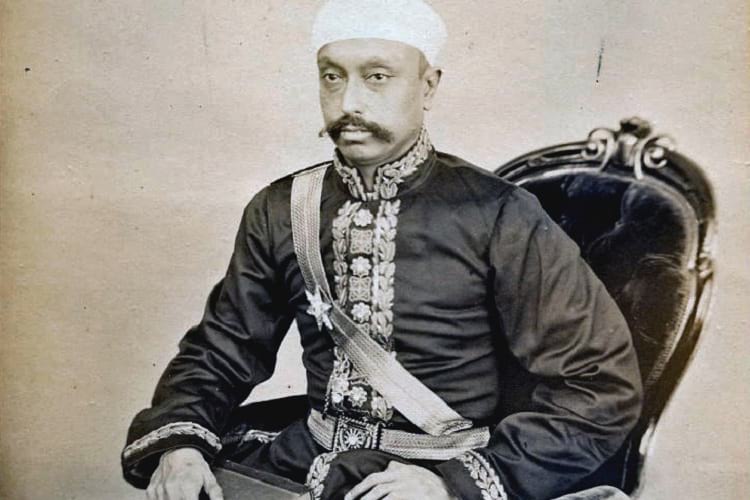
Sir Salar Jung. (Wikimedia Commons)
“The Magnificent Diwan” is a story of Mir Turab Ali Khan Bahadur Sir Salar Jung Shuja-ad-Daula Mukhtar-ul-Mulk, widely known as Salar Jung I, Diwan of the Nizam of Hyderabad from 1853-1883. The Biography is authored by Bakhtiyar K. Dadabhoy, as an attempt to interweave Diwan’s political legacy with his personal anecdotes. Salar Jung I played an important role in reforming and rebuilding the Hyderabad state. Thus, he is rightly known as the founder of Hyderabad.
Two of the important events, biographer Dadabhoy discussed in the book, are of the politically ambitious Nizam’s State Railway and the controversy surrounding the visit of Prince Wales to India. Making it an entertaining and interesting read about political manoeuvring and deviousness.
The Nizam’s State Railway
Dadabhoy, writes about Governor of Bombay Sir Bartle Frere’s idea of linking the Great Indian Peninsular Railway via Hyderabad. Thus connecting Hyderabad to Bombay and Madras, and rendering it more accessible in times of need. Although, his ideas were well received by the Secretary of State- Sir Charles Wood; the Governor of Madras- Sir William Denison had his apprehensions.
Meanwhile, The British resident in Hyderabad, Sir George Yule with support from Salar Jung, tried to coerce the viceroy, Lord Elgin, into accepting the proposal of having railway pass through Hyderabad. It would make it easier for the British to move troops and stores from Secunderabad to Madras, Bombay, Poona and Bangalore, he argued. The writer then discusses the nature of apprehensions and what led the Governor of Madras to cave in.
“Wood, for all his reservations, had recognized the value of a line connecting Hyderabad and conceded that such a line would ultimately have to be made. The motivation was almost entirely military, though the economic advantages of connecting Hyderabad with Bombay may have also contributed to the decision.”
As much as Sir John Lawrence, who replaced Lord Elgin as viceroy, agreed to the scheme, the Nizam, Afzal ud Daula, had his doubts. Not so much about the financial aspect—the British wanted him to bear half the cost of building the railway—as the social and political impact the railway line would have on his subjects.
“At first, the nizam was completely opposed to the plan, regarding the railway as the forerunner of undefined evil in spite of Salar Jung’s eloquent championing of the cause.”
He gave permission only after the British government agreed to let him have jurisdiction over the railway in his territory.
The writer then describes how the next few sets of events lead to the foundation of Hyderabad State Railway. And how Nizam was smoothly deceived to bear the complete cost of construction of the railway line.
“Salar Jung watched helplessly as the nizam’s money was used to serve the interests of the British. It would be wrong to say that he cooperated; he merely yielded when left with no choice”
A Storm in an Indian Tea Cup
A little after the muddled proposals for Hyderabad Railways was accept, there brew “A Storm in an Indian Tea Cup” writes Dadabhoy. In 1875, Prince of Wales visit to India stirred up controversy in Hyderabad. The British wanted the young Nizam, Asaf Jah VI, to travel to Bombay to pay his respects to the royal visitor at a planned gathering of Indian princes. Salar Jung staunchly opposed this on grounds of the eight-year-old Nizam’s delicate constitution.
“While the delicate health of the Nizam was a fact, Salar Jung would, in all probability, have opposed the visit in any case because he did not want the Nizam to pay public homage to the Prince of Wales as his suzerain.”
Resenting this defiance, the British resident, Saunders, hinted at forcing the Nizam to attend the Prince of Wales’ gathering in Bombay. Salar Jung then took the unprecedented step of printing and circulating copies of their correspondence. He even sent them to the Prince of Wales to acquaint him with the situation. Fair-minded Englishmen were outraged by the resident’s bullying tactics.
“The Times of India wrote: ‘To threaten a native sovereign with future mischief if he elects for good reason—or even for no reason at all—to remain away, is a coarse and clumsy way of promoting loyalty and affection amongst those who should be the pillars of our Empire of the East.’”
The British government became alarmed that the Prince of Wales might undermine their prestige by visiting Hyderabad and that he would come under the Diwan’s influence.
“Lord Salisbury observed, ‘Nothing is more remarkable than the influence which Salar Jung acquires over Englishmen with whom he came in contact and the fidelity with which they serve him after they have come home.’”
The whole affair turned out to be a diplomatic victory for Salar Jung, as the Bombay Gazette duly noted, comments Dadabhoy.
“He had managed to show both Aitchison and Saunders in a poor light and had the ‘satisfaction of placing the Nizam before the British public in the now familiar character of the persecuted Indian Prince.”
Today, the name Salar Jung is associated with the Salar Jung Museum that houses artefacts and relics collected by Salar Jung III, the last prime minister from the noble family. Not much is known about his predecessor but the state of Hyderabad is as a magnum opus of Salar Jung I. In The Magnificent Diwan, Bakhtiyar K. Dadabhoy elucidates on his excellent administrative skills that lead to rebirth of the glorious kingdom that we have read and heard about.
More about the book:
 The Magnificent Diwan- The Life and Times of Sir Salar Jung I By Bakhtiar K. Dadabhoy
The Magnificent Diwan- The Life and Times of Sir Salar Jung I By Bakhtiar K. Dadabhoy
“This book is not merely a chronicle of Salar Jung’s life but also a history of Hyderabad—both social and governmental—and gives the reader an encompassing view of the man and his world, using his life and work to illumine the period.”
RELATED
The post The Magnificent Diwan- Life Story of the Most Powerful Indian Statesman of the 19th Century by Bakhtiyar K. Dadabhoy appeared first on .
]]>The post Newly Released “From Oberoi to Oyo” – A Close Look into the Revolution of the Indian Hospitality Industry appeared first on .
]]>
Oyo hotel in Shenzhen, China. (Jon Russell / Flickr)
Chitra Narayanan, Delhi-based Journalist gives us a well-researched look into the growth and development of the hospitality industry in India in her book, “From Oberoi to Oyo”. Among other things, she describes how OYO startled the industry and became the fastest growing budget hotel operator in the country. She also gives us some industry insights into the viability of loyalty programmes.
The Coming of OYO
OYO’s founder Ritesh Agarwal set up the hotel brand in 2013, when he was only nineteen years old, registering the new business as Oravel Stays Private Limited. Within three years, the company became a force to reckon with. So much so that, in August 2016, Cyrus Mistry, who was then the chairman of the Tata Group, mentioned OYO as a possible threat at the 115th annual general meeting of Indian Hotels Corporation Limited.
With good reason –
“In 2018, it had 4,50,000 rooms globally and a presence in 500 cities and its target of 1 million rooms appeared to be quite achievable. Its valuation was far more than India’s largest hotel company, the over 100-year-old Taj.”
Chitra Narayanan then talks about how Ritesh Agarwal, who hails from a small town in Odisha and is the youngest of four siblings, began his entrepreneurship journey and got funding for the business. She also goes into detail about how OYO has stayed ahead of its competitors due to its effective application of mobile technology, data science, and an innovative business approach that focused on consumer convenience.
To explain it simply, OYO bridged the gap between what the majority of consumers wanted—branded hotels that were both affordable and comfortable—and the millions of small and inexpensive hotels around the country that would benefit from receiving a standardization in quality.
“Basically, OYO went after the millions of small hotels near railway stations, bus stations etc., and renovated and branded them.”
OYO now aims to become a global brand and is rapidly expanding to other countries. It is also branching into allied verticals and new niches. While it may seem that there is no way but up, Narayana sounds a note of caution:
“Relationships are what make and break companies in this industry and OYO has to crack that piece. The other problem with OYO’s model is its basic burger approach of fast food companies may pall soon as diners crave gourmet offerings.”
Winning Customers with the Loyalty Card
The Indian hospitality industry adopted the concept of loyalty programmes from their U.S. counterparts, and different hotels offer different incentives—discounts, gifts, concert tickets, and so on— to customers to make them want to stay with them
“The reason hotels are big on loyalty programmes is simple. For most hotel chains with a strong programme—be it Starwood (now Marriott) or Taj—40–50 per cent of their occupancy comes from their loyalty card members. Year-on-year the growth is 10 per cent.”
Additionally, by investing in loyalty programmes, the hotels can collect behavioural data on their guests. Using this, they can come up with ideas for providing more personalized services. Furthermore, they can keep tabs on changing trends and adapt to those.
“Thanks to technology and the access to information, we are learning what our guests want,’ Bazin said. In the last forty years, people wanted comfort, good bedding, fire security system, a good shower. Today they want emotions, experience, leisure, they want to see objects, they want interesting colours, design, so today hotels are far less standardized than in the past. This is a good thing as it forces hoteliers to be innovative,’ he added.”
Narayanan mentions the affiliations that many hotels have with different airlines to further enhance the customer experience.
She highlights the drawbacks and limitations of loyalty programmes and offers prescriptions for hotels to get better results from them. She also covers how the hotel industry might benefit from blockchain technology.
“Phocuswright, a travel research authority, pointed out blockchain’s potential to improve hotel loyalty programmes and several interesting use cases. The blockchain-ona-blockchain system, data sharing from different places such as customers’ cryptocurrency wallets, will enable a far more complete and authentic profile of guests, giving clues on their purchasing behaviours. It can also enable better cross-promotions.”
As the author points out in this well-written book, the world is changing, and, whether it is domestically or internationally, consumers now have more power than they ever. The hotel industry will have to keep adapting and improving to stay competitive.
 From Oberoi to Oyo | By Chitra Narayanan
From Oberoi to Oyo | By Chitra Narayanan
Behind the scenes with the movers and shakers of India’s hotel industry
RELATED
The post Newly Released “From Oberoi to Oyo” – A Close Look into the Revolution of the Indian Hospitality Industry appeared first on .
]]>The post Horrors of 1971 Bangladesh Genocide Chronicled by Anam Zakaria Through a More Personal Lens appeared first on .
]]> The year 1971 is of great importance not just for Bangladesh and Pakistan, but also for India. It changed the political climate in the subcontinent for years to come. We have enough political accounts that serve the state narrative of the three nations involved, but very few to document the horrors experienced by civilians. In her book, 1971: A People’s History from Bangladesh, Pakistan and India, Anam Zakaria, oral historian and author explores what it means to belong, drawing on harrowing accounts of lives tangled in the struggle for freedom.
The year 1971 is of great importance not just for Bangladesh and Pakistan, but also for India. It changed the political climate in the subcontinent for years to come. We have enough political accounts that serve the state narrative of the three nations involved, but very few to document the horrors experienced by civilians. In her book, 1971: A People’s History from Bangladesh, Pakistan and India, Anam Zakaria, oral historian and author explores what it means to belong, drawing on harrowing accounts of lives tangled in the struggle for freedom.
By examining the social narrative, Zakaria creates a kaleidoscopic collage of memories that are haunting, personal and sincere.
Bangladesh didn’t gain Independence at the stroke of midnight like its neighbours; India and Pakistan under the Indian Independence Act of 1947. Partition didn’t give birth to Bangladesh rather it was the war of 1971. The Liberation War as known in Bangladesh, between the two wings of Pakistan; East Pakistan and West Pakistan culminated into dismemberment of the former wing into a new state- Bangladesh; The Country of Bengal.
The fight for liberation officially began in March 1971 as a response to the Operation Searchlight carried out by the military regime of West Pakistan to curb the voices of nationalist Bengali intelligentsia. But the seeds for the movement were sown soon after Partition as the Language Movement. This movement was headed by the intellectuals of the erstwhile East Pakistan rallying against the repression of the cultural and social identity by an authoritarian government.
“The language issue was a catalyst indeed and, in hindsight, is popularly understood to be a major source of rupture.”
In Chapter 5 of the book, Zakaria interviews Bangladeshi academics and historians who lived through the massacre.
“Through the following interviews, this chapter seeks to explore the more personal impact these events had on the lives of East Pakistanis, and the nuanced ways in which they transformed from Pakistanis to Bangladeshis before the latter even took birth.”
One of the interviewees is a historian and writer, Professor Muntassir Mamoon of Dhaka University. Mamoon as a young man in the 1960s closely observed the political shift of powers in the years leading to the war. He talks about incidents that yielded his transformation from a patriotic Pakistani to a supporter and member of the Bangladesh movement. Along with the other writers, Mamoon helped foreign journalists document the carnage as it took place.
“Mamoon had dedicated his life to archiving, writing and teaching about 1971, while also advocating for war crimes trials in Bangladesh. He was committed to ensuring that the memory of 1971 was not forgotten.”
In his efforts to not let the memories of the genocide be erased from the public mind, he founded the genocide and torture archive and museum in Khulna district of Bangladesh. In Mamoon’s museum, one of its kinds in South Asia, are rare collections of photographs, paintings and relics showcasing the horrific realities of the ninth month-long butchery.
“Before we left, Mamoon gave us a tour of the museum, showing us photographs of vultures picking on the bodies of Bengali men and women, images of dead children, their eyes popping out, their legs bitten off by animals.“
Of her tour around the museum, Zakaria comments on drawings by young school students depicting their understanding of the war and the Bengal armed resistance. These drawings evoke strong feelings of loss, pride and victory. Observing this she says Mamoon’s mission to keep the flame of memories burning has been accomplished.
“These were the vivid memories, the photographs, the clothes, the rooms and the spaces, which kept 1971 alive. These were the expressions of the war, the living memory of 1971. There would be no letting go.”
Anam Zakaria as an oral historian undertook great efforts to understand and document the personal narratives and sentiments of the subjects of the 1971 movement. All her efforts helped her deliver a perspective in 1971: A People’s History from Bangladesh, Pakistan and India that is often overshadowed by the state interests.
 1971- A People’s History from Bangladesh, Pakistan and India | By Anam Zakaria
1971- A People’s History from Bangladesh, Pakistan and India | By Anam Zakaria
“Through a personal journey, she juxtaposes state narratives with people’s history on the ground, bringing forth the nuanced experiences of those who lived through the war. Using intergenerational interviews, textbook analyses, visits to schools and travels to museums and sites commemorating 1971, Zakaria explores the ways in which 1971 is remembered and forgotten across countries, generations and communities.”
RELATED
The post Horrors of 1971 Bangladesh Genocide Chronicled by Anam Zakaria Through a More Personal Lens appeared first on .
]]>The post Newly Released In-Depth Biography of the Queen of Indian Cinema- Sridevi appeared first on .
]]>
Young Sridevi posing for a photo. (மைதா கோந்து / Flickr)
In his newly released biography of Sridevi—one of the most successful film actresses of the Indian film industry— writer Satyarth Nayak recounts her rise to superstardom in regional film industry along with the Hindi cinema from the 1980s.
Deccan Diva
Nayak traces Sridevi’s life back to the 1980s and her entry into the film industry with a splendid grandeur. She showed off her comedic talent in I. V. Sasi’s Guru (1980) and her flair for drama in Balachander’s Varumayin Niram Sivappu (1980), acting in both films with Kamal Hasan. She also acted in the revenge tale Vishwaroopam (1980) with Sivaji Ganesan and the evergreen classic Johnny (1980) with Rajnikanth.
“Previous generations had seen a sharper demarcation where a Savitri would do serious roles and a B.Saroja Devi would opt for lighter parts. Sridevi now emerged as that single package who could deliver both.”
Additionally, she had 12 Telugu film releases in 1980. These included films with top stars like N.T. Rama Rao, Chiranjeevi and others.
She played her first double role in Telugu cinema with Mosagadu (1980). Chiranjeevi played the villain in this film only because he wanted to work with her. Speaking with the writer, Chiranjeevi recalls his experience of working with the actress.
“My biggest learning from her was discipline. She would never indulge in frivolous talk on the sets or give anyone the scope to be too informal with her. She would come, get ready, do her job and leave…”
Eighteen-year-old Sridevi had a whole slew of successful films in 1981, of which the dramedy Meendum Kokila became a cult classic. She not only won her first Filmfare Award for Best Actress in Tamil for this film, but her performance also brought her to the attention of her future husband Boney Kapoor.
Boney Kapoor reveals: ‘I remember watching Meendum Kokila. Sri was seated in the song wearing the traditional south Indian sari called madisar. I think I fell in love with her then and there.’
Around this time, Sridevi’s parents were seeking a suitable groom for her. Kamal Hasan remembered Sridevi’s mother’s efforts to marry off her daughter.
“Her mother and I would often discuss Sridevi’s marriage options and she would joke with me that maybe I should marry her daughter. I would laugh and retort that if that happens, both Sri and I would drive each other so mad that I will have to send her back to her house the very next day!”
Her lack of formal education and her inability to converse fluently in English unlike her younger sister Srilatha bothered her, Suhasini Maniratnam sheds light on this aspect of her life while talking to the writer.
“Although Sridevi never resented that her sister had mastered the language better than her, she would often feel a little inadequate. Sometimes when Srilatha and I would start conversing in English, Sri would playfully taunt us both saying, “You English girls!” Perhaps one gets a glimpse of that in English Vinglish.”
Her successful run in films continued meanwhile, and she won the Tamil Nadu State Film Award for Best Actress for the masterpiece Moondram Pirai (1982).
Owing to her mass popularity entire towns came to a halt during her shooting appearances. Everyone wanted to have a look at her.
‘Her popularity has to be seen to be believed. Andhra towns like Vijayawada, Rajahmundry and Vishakhapatnam virtually come to a standstill if she happens to be shooting there.”
And her very busy schedule was about to get busier with her re-entry next into Hindi cinema.
Nayak then digs deep into her journey in Bollywood and how she ultimately conquered the hearts of millions.
Bombay Bombshell
Sridevi had acted in a couple of Hindi films—Julie (1975) and Solva Saawan (1979)—but it was with Himmatwala (1983) that she became a nationwide sensation.
“Eminent film critic Mayank Shekhar agrees: ‘There was something visceral about her that cannot be intellectualized. The biggest stars have a cosmic relationship with audiences, and Sridevi had exactly that. She never had to chase the Hindi camera now; the camera had begun chasing her, salivating for another Himmatwala.’”
She then went on to win her first Filmfare Award in Hindi for Best Actress for her role in Sadma (1983). Her talent and professionalism brought her accolades from Javed Akhtar, and new films with top Hindi actors like Amitabh Bacchan, Rajesh Khanna and the rest.
Director Subhash Ghai, with whom she worked in the multi-starrer Karma (1986), was mesmerised with the actress as well.
“Her strength was that she would not only act but also react. Good actors react to everything around them including their co-actors; Sri had that quality… During rehearsals, she would never let you know how she was planning to perform. Just before the scene, she would be sitting quiet. Once the camera rolled, she would suddenly dazzle.”
The media tried to stir up controversy by linking her with some of her co-stars and stressing on her rivalry with Jaya Prada. They also highlighted her close friendships with Rekha and Tina Munim.
Due to the constant media exposure, Sridevi learned to be more guarded in her interviews but otherwise remained unfazed. She was confident of herself as an actress and now commanded Rs. 10 lakhs per film. Filmfare, in their issue of July 1984, declared her to be ‘Unquestionably No.1’. And this legacy of her being the First Female Superstar of Indian cinema came to an abrupt end in 2018 with her sudden demise.
With his book Sridevi-The Eternal Screen Goddess, author and screenwriter Satyarth Nayak gives us an insight into the life of the highly acclaimed and loved, Padma Shree actress.
Sridevi- The Eternal Screen Goddess | By Satyarth Nayak
“If her life played out forever in the limelight, so did her sudden demise in 2018. Charting five decades of her larger-than-life magic, this book celebrates both the phenomenon and the person Sridevi was. This is her journey from child star to one of our greatest movie luminaries who forever changed the narrative of Indian cinema.”
RELATED
The post Newly Released In-Depth Biography of the Queen of Indian Cinema- Sridevi appeared first on .
]]>The post Indian Serial Killers and the First Woman to Receive the Death Penalty in Karnataka appeared first on .
]]>Mr. Bhattacharyya thought it was high time they did, and hence this book.
In the introduction, he asks,
“What is it that attracts us to the stories of and the heinous crimes committed by a serial killer?” and “Is it because of a vicarious pleasure that we derive from the macabre methods of these killings?”
“Or maybe something that appeals to our basic, primal instincts. Perhaps we all have a latent serial killer in us…waiting for that push to the dark side.”
K.D.Kempamma
Of the 12 Indian serial killers that Mr. Bhattacharyya profiles, let’s have a look at the life and times of K.D.Kempamma, also known as Cyanide Mallika for reasons that will soon become obvious.
The account begins on 19 October 1999 at the Jalageramma temple in Hoskote, a district in Bangalore Rural. Mamatha Rajan, a vulnerable and troubled 30-year-old woman, visits the temple to seek some mental relief. Here, she meets an older woman, who introduces herself as Lakshmi and proceeds to lend her a sympathetic ear.
‘Sister, whatever seems to be bothering you, you must leave it to god. He challenges us in many ways. He puts obstacles in our path to test our faith. You must never lose hope and faith,’ Lakshmi said calmly. Her words were like a balm to Mamatha’s agitation.
‘How do you know something is troubling me?’ Mamatha asked.
‘I know many things, child.’ Lakshmi raised Mamatha’s chin and continued, ‘Your eyes are sad. And in your heart you carry a great burden. You find it difficult to sleep at night.’
Here, while it may have been apparent that Lakshmi is a manipulator, Mamatha is far too needy for reassurance and fails to find anything fishy about the woman’s behaviour.
Instead, she even asks,
“Are you a saintly woman?”
She is willing to accept spiritual advice from a complete stranger, and agrees to her suggestion that she conduct a mandala puja at her home to get rid of her personal problems.
The Mandala Puja
‘I perform a special mandala puja that will help your prayers reach the gods faster and more efficiently. The puja has the power to make your wishes come true,’ Lakshmi said.
Mandala puja is considered to be the ultimate prescription in Hinduism to transform one’s life for the better. It is usually done to please the favourite deity of the person, whichever god it might be, and thereby be blessed with boons and good tidings.
They agree to perform the mandala puja ten days later on the night of 29 October at Mamatha’s house. However, Lakshmi has a non-negotiable condition.
“But you must send everyone away from your house for at least a couple of days. Remember, no one must know about it or else the prayer will not work.”
Mamatha arranges for her family members to leave the house on that fateful night. She is alone at home, all bedecked in her finery and jewellery, when Lakshmi shows up at the appointed time with all the paraphernalia for the puja.
She then begins the puja in all earnestness, and, after a while of chanting on her own, decides to get the victim involved.
The Cyanide Holy Water
Lakshmi asked Mamatha to close her eyes and pray. Mamatha closed her eyes, her heart exploding with joy and gratitude. Then she heard Lakshmi say: ‘When I give you the holy water, you must swallow it at once or else the prayer will not be complete. Understood?’
Mamatha nodded. Lakshmi pulled back Mamatha’s braid and poured the liquid into her mouth. Then she clamped down on her nose and mouth to prevent her from breathing. As soon as Mamatha gulped down the holy water, which was cyanide, she started gasping for air. She opened her eyes to see Lakshmi’s kind face now contorted into a vicious sneer. Mamatha struggled to free herself from Lakshmi’s death grip, but Lakshmi only tightened her hold. Within moments, life ebbed away from Mamatha.
Lakshmi then strips the dead woman of all her jewellery, stuffs it into her purse, and walks out.
We now learn that she has used many aliases for her murder sprees, including the one that would eventually become the most well-known, Mallika.
Evolution of a Murderess
The author then gives us a brief account of Mallika’s impoverished background in her hometown of Kaggalipura.
‘Tell your mother that I am no longer giving her things on credit!’ the grocer told a ten-year-old Mallika. ‘If she cannot afford to buy rice, she should cook with sawdust!’ The crowd gathered at the shop laughed at her loudly.
Mallika ran as fast as she could, tears streaming down her face, the laughter echoing in her head. She hated her life and she hated poverty. She wanted to be rich.
This explains the main motive that led her down the criminal path.
As she is a Class V drop-out and needs to earn money to survive, she begins working as a maid. She marries Devraj, a tailor who works at the National Institute of Mental Health and Neurosciences in Bengaluru. Marriage does not bring any material benefits, so she begins stealing from her employers and, from there, it is a step down to murdering people.
Fortunately, Mallika is no longer at large. The police nabbed her after her sixth murder and the court sentenced her to death. She was the first women to receive the death penalty in Karnataka. However, that was later commuted to life imprisonment.
She was in the news briefly in 2017 for sharing the cell next to V. K. Sasikala, the convicted money launderer and aide of J. Jayalalithaa, the former Chief Minister of Tamil Nadu. Apparently, Sasikala wasn’t too happy about having her in her vicinity, and so Mallika was moved to another jail. She remains there, at the time of this writing.
To read more about Cyanide Mallik and other Indian serial killers, we recommend the book:
 The Deadly Dozen India’s Most Notorious Serial Killers | By Anirban Bhattacharya
The Deadly Dozen India’s Most Notorious Serial Killers | By Anirban Bhattacharya
RELATED
The post Indian Serial Killers and the First Woman to Receive the Death Penalty in Karnataka appeared first on .
]]>The post The Coimbatore Kidnapping – The Abduction and Murder of Mukta and Ritesh Jain appeared first on .
]]>The author, Arita Sarkar, is a journalist who has investigated a large number of kidnapping cases around the country. In this book, she gives us the details of ten kidnapping cases that occurred in recent times.
In the excerpt about Mukta and Ritesh Jain from Coimbatore, we realize just how scary it can be to let young children go off on their own. Even in their seemingly safe neighbourhood, only 500 metres from their home, danger can lurk.
The Kidnapped Children – Mukta and Ritesh Jain
The Jain family, who had moved down South from Pali in Rajasthan, lived in Kathan Chetty Lane in Coimbatore and ran a store selling bath and furniture accessories. Rajan and Swati Jain had two children, 11-year-old Mukta and 7-year-old Ritesh, who were in Class VI and Class III, respectively, at Suguna Rip School in the Tatabad area.
As the school was six kilometres away, the Jains had arranged for a school van to pick up and drop off their children. Several other children of the neighbourhood also used this school van service, Surya Cabs. Every morning, at 7:30 a.m., the children walked down the narrow lane from their home to the pickup point in front of the Vinayak Temple on the main Rangai Gowder Street. It was only a short distance of 500 metres and was considered safe enough for the children to go on their own.
On the day that they were kidnapped—29 October 2010—Mukta and Ritesh went as usual to await their school van. However, instead of their regular van, a different vehicle—a white Maruti Omni—arrived to pick them up. A 23-year-old man, Mohan Krishnan, was driving it. Although he was not their regular driver, the children were familiar with him. So, even though the other usual students were not in the vehicle, they didn’t think there was anything strange about the situation. They got in and settled down to be driven to school.
“Instead of driving in the direction of the school, Mohan took the road to Pollachi, a town around 50 kilometres from Coimbatore.
When Mukta and Ritesh realized they were nowhere near their school, they began to panic. They repeatedly asked Mohan where he was taking them and begged to speak to their parents. Soon both were in tears.”
The Kidnappers – Mohan Krishnan and R. Manoharan
Mohan Krishnan hailed from Angalakurichi, a village in the outskirts of Coimbatore. Along with his parents, he had moved to the city in search of employment about seven years earlier. Mohan Krishnan had kept in close touch with his childhood friend, R. Manoharan, and the two of them plotted together to kidnap the Jain children.
“Based on the confessions of the two men, the mahila court’s judgment would later note that the two had chalked out their plan to kidnap the two children five days before abducting them.”
The original plan was to take the kidnapped children to the secluded hilltop Gopalsamy temple in the Western Ghats and to keep them there until their parents paid the ransom. They assumed that they would get the money before the week was up and, in the meantime, nobody would realize where the children were. As the local villagers came to the temple only on Saturdays, it was pretty much deserted at other times.
The Kidnapping Goes Wrong
The two kidnappers had tried to make their heinous plan as foolproof as possible. First, they got the children away without any trouble. Second, they kept them quiet and from attracting the attention of passing motorists by lying that they were taking them to their school picnic. Third, they meant to hide them in the secluded temple until they received the ransom. Fourth, they had decided on calling from a landline to ask for Rs. 20 lakhs, instead of using their mobiles.
“‘They knew that if they made the call from a mobile phone, the police would eventually track their location and find them. They had planned to demand a ransom of Rs 20 lakh. They decided to keep the children somewhere and make the ransom call from a landline,’ said Thiru Kanagasabapathy, the investigating officer.”
What they hadn’t counted on was the now-terrified children becoming hysterical and uncooperative, and their own vicious natures that now eclipsed any remaining remnants of sanity and decency.
They tried to herd the frightened, weeping children along a steep, forested path to the temple, but that did not work out. The children climbed a short distance up the hill and then refused to go beyond that. They said they were too tired and did not want to walk anymore. The kidnappers debated whether they should forcibly drag the children up the hill but decided not to risk anyone hearing their screams and protest.
From Kidnappers to Murderers
So, they got the children back down the hill and into the vehicle and drove off. They were not sure what they were to do next. They didn’t have any other hideout where they could take the children. And it is difficult for two young men to keep two unwilling children—and especially a girl child—in an urban area without arousing the suspicions of the neighbours. And, without a hideout, where were they to keep the children until they received the ransom?
The realization that their kidnapping plan was unravelling put the kidnappers in foul tempers. Not only would they not get the money, but the children would also identify them to the police as well.
Perhaps it was then that they decided to take the step from kidnappers to murderers.
Before that, though, they unleashed their baser instincts on 11-year-old Mukta. Driving to a mango orchard, they forced her little brother into the front seat and threatened him with violence if he turned around. Then the two of them raped her.
“Investigating Officer Thiru said, ‘Mukta was too young to understand what was happening to her. They warned the boy not to turn around as they took turns raping her. Mohan raped her first, while Manoharan kept an eye on the boy and hit him every time he tried to turn his head.’ The postmortem report would later note that Mukta suffered ‘injuries to her vagina and anus due to forcible sexual assault’.”
Keep Your Children Safe
The disturbing incidents in this book will send chills down the spines of readers and should serve as a warning to all parents in India and elsewhere. You never know who may be keeping track of your children’s movements and with what evil intent. Unfortunately, kidnapping is not a crime that it is possible to always foretell or completely stamp out. There will always be greedy, amoral people who can harm your children for their nefarious ends.
And that’s why, you need to be more vigilant about your children’s safety—always know where they are, who they interact with, and what activities they are engaged in, for instance— and take more definitive steps to shield them from harm.
For more, read the book:
 Kidnapped: True Stories of Abduction, Ransom and Revenge | By Arita Sarkar
Kidnapped: True Stories of Abduction, Ransom and Revenge | By Arita Sarkar
RELATED
The post The Coimbatore Kidnapping – The Abduction and Murder of Mukta and Ritesh Jain appeared first on .
]]>The post Communism in Indonesia: The Destruction of the PKI appeared first on .
]]>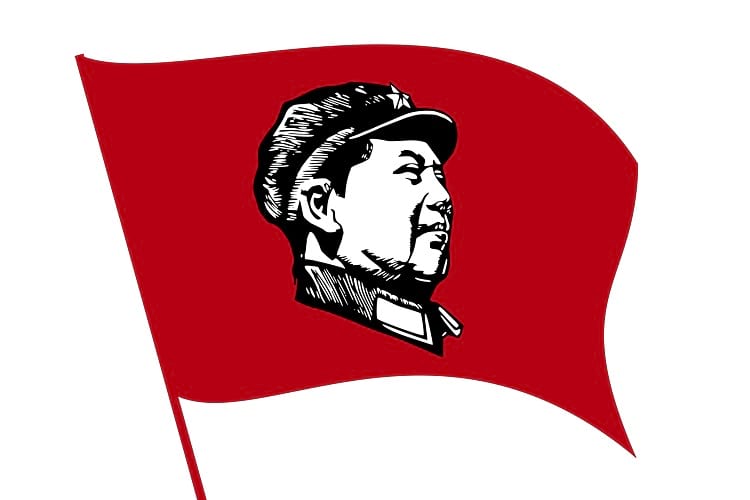
Mao Zedong, a Chinese communist revolutionary that inspired Maoism on a red flag. (Wikimedia Commons)
Julia Lowell’s book ‘Maoism – A Global History‘, released by Bodley Head, gives us an interesting and impartial look into the legacy of Chairman Mao.

General Suharto in his office. (Presidential Library)
In Chapter 5 ‘The Indonesian Connection’, we take a walk back into one of Indonesia’s most tumultuous years. It was in 1965 that the Indonesian Army, under General Suharto, seized power from President Sukarno and annihilated the PKI, the communist party of Indonesia. Around one million people died in the purge and the incident remains a gaping wound in Indonesian society. Even over 50 years later, Indonesian cannot question the official version of what happened without repercussions.
At the start, we follow an American filmmaker, Joshua Oppenheimer, who is making a film on the event and is interviewing both the perpetrators and the victims. We hear from Inong, an elderly village headman, who speaks openly about his role in the paramilitary death squads and how they tortured and mutilated the victims before killing them. In the course of this monologue, he describes drinking the blood of the people he killed in order to keep from going crazy:
“There’s only one way to avoid it: drink your victims’ blood or go crazy. But if you drink blood you can do anything! Both salty and sweet. Human blood. I know from experience.”
This bloody chapter in Indonesian history resulted from a combination of domestic power struggles, personal vendettas, a conflict between traditional religious beliefs and communist beliefs, and the nefarious interference of the usual suspects in such matters – the US and the UK.
However, let us first take a look at the role of the Communists in the matter.
The PartaiKomuns Indonesia (PKI)
Here are some pertinent points about the PKI:

President Sukarno. (Onbekend / Wikimedia Commons)
• It came into existence in 1920.
• The Soviet Comintern helped bring it into existence.
• It was “the first Communist party in Asia”. It formed a year prior to China’s communist party.
• It participated in the anti-colonial movement against the Dutch occupation of Indonesia and, as a result, was forced to go underground.
• It tried to seize power in East Java in 1948 and was brutally foiled, with tens of thousands of its members and leaders summarily killed.
• Dipa Nusantara Aidit took over the PKI leadership in the 1950s and began to take a more Maoist approach.
• Under Sukarno’s ‘Guided Democracy’ in the 1950s and early 1960s, the PKI flourished. It carried out a large-scale grassroots campaign during this period and gained a strong following in Indonesia. The communists managed to mobilize “tens of millions of Indonesians” in the various social welfare and upliftment schemes and programs that they launched.
• The PKI’s public popularity was why Sukarno allied with it and shielded it from its detractors. He said:
“Can we create unity while bunging twenty per cent, sixteen millions, the Communists, down a mouse-hole? They want me to ride a horse, but insist that they must first chop off one foot of the horse. I cannot and will not ride a three-footed horse.”
• Like Sukarno, the PKI was staunchly against the imperialist meddling of the Western powers in Asia.‘Colonialism and imperialism are living realities in our world,’ he(Sukarno) told a South East Asian audience in 1963. They ‘manipulate conditions in order that our nations can be kept eternally subservient to their selfish interests.’
The Lead-up to the Coup
Encouraged by their grassroots success and inspired by Mao’s much-touted achievements in China, the PKI began to envision a power takeover in Indonesia. However, the Indonesian Military had no liking for the PKI and presented a huge roadblock.
“It reviled PKI not only for its alleged attempt in 1948 to split the nascent Indonesian nation, but also for its imputed atheism, for its subscription to a foreign ideology and purported sponsorship by foreign powers (the Soviet Union and China), and for the challenge that it posed to elites in power since the revolution. Above all, the PKI was a hated competitor because, in its organisation and discipline, it threateningly rivalled the army itself.”
However, the Indonesian Army was guilty itself of what it accused the PKI of. It too received covert assistance from foreign powers. In its case, it was both the USA and the Soviet Union.
To challenge the power of the Army, the PKI decided to form a Fifth Force. That is, a PKI militia made up of workers and peasants. They wanted to, as DN Aidit put it, “‘Ignite the spirit of the wild buffalo!”
As the rift between the PKI and the Indonesian Army widened, there was polarization between the civilian population too.
‘The nation is at boiling point,’ Aidit told his party. ‘Therefore intensify the revolutionary struggle at all points.’
Two events pushed matters towards catastrophe:
• In May 1965, the Indonesian foreign minister, Subandrio, publicized a draft telegram that was supposedly written by the British ambassador, Andrew Gilchrist, and which “alluded to a planned British and American attack on Indonesia assisted by ‘our local army friends’. At a PKI mass rally later, Subhandrio said there were ‘documentary proofs’ of an imminent counter-revolution plotted against Sukarno.
•In August 1965, Sukarno passed out thrice and it was very likely that, with his death, the PKI would lose its shield against the Indonesian Army. The alarmed PKI decided to act first.
The 30 September coup attempt
“On 1 October 1965, Indonesians woke up to an unnerving ten-minute broadcast. It told, in the third person, of a sudden action by the ‘September 30th Movement’. This mysterious organisation had arrested ‘a number of generals’ plotting a CIA-sponsored ‘counterrevolutionary coup’ for the upcoming Armed Forces Day on 5 October.”
Under the PKI’s directions, the following took place:
• Seven teams of soldiers arrested seven anti-PKI army generals—the seventh team bungled and captured an adjutant instead—and executed them at a place called Lubang Buaya.
• The murdered generals were thrown down a well and covered with dirt and vegetation.
The PKI, however, had not considered that there would be a definite lack of support for their coup from Sukarno. They had also not counted on the decisive actions that General Suharto took to put down the coup. Unfortunately for them, they made it easier for him by their utter lack of even the most basic planning and preparations.
“Cutting decisively through the confusion and curious lack of planning and communications displayed by the conspirators, Suharto quickly took control of the situation and appointed himself army commander, sidelining Sukarno. Within twelve hours, he had cleared Merdeka Square of the movement’s forces, before removing the remainder of the conspirators from Halim base. By the early hours of 2 October, the coup’s leaders and their troops, some 4,000 in total, had scattered in many directions. Suharto ordered loyal troops to track them down, but also to capitalise on the failed coup to purge anyone suspected of ‘Communist’ sympathies. The PKI was to be ‘smashed’, ‘crushed’, ‘buried’, ‘annihilated’, ‘wiped out’, ‘exterminated’ and ‘destroyed down to the very roots’.”
As you will read in the book, General Suharto proved to be a man of his words.
For more details, read the book:

Maoism: A Global History | By Julia Lovell
RELATED
The post Communism in Indonesia: The Destruction of the PKI appeared first on .
]]>The post China’s ‘One Belt, One Road’ – The Economic Project That Might Reshape the World appeared first on .
]]>
China in Red, the members of the Asian Infrastructure Investment Bank in orange. The 6 proposed corridors in black. (Lommes / Wikimedia Commons)
In ancient times, the Silk Road was famous as the trading route along which China carried out extensive commerce with the rest of the world. This is now being revived as the ‘One Belt, One Road’ initiative or, as it is known in some quarters, as the New Silk Road. Passing across land and sea through around seventy countries, this initiative will reinvigorate their economies and bring about a considerable change in global trade. Also, most probably, it will cause a spectacular shift in political power from the West to the East.
“A journey of a thousand miles begins with a single step”, said Confucius a very long time ago.
His native country, China, has already taken that step and are now well on their way towards becoming an economic world power.
Bruno Macaes’ book ‘Road to China takes a look at what is most certainly the most interesting development of the present century—the implementation of China’s Belt and Road Strategy.
“At home the initiative was not called the “New Silk Road,” but “One Belt, One Road.” Its scope was so large that the timeline for its realization had been fixed at more than thirty years, with the first phase of the project to be concluded in 2021 and the project as a whole realized by 2049.”
Hardly a day has gone by in recent times, when the mainstream media as well as the alternative media hasn’t had something to say about China’s growing stature. Quite a bit of it is of the type purposely intended to set alarm bells ringing across the length and breadth of India. And, of course, the pealing is meant to scare everyone in the West as well.
Most of this scaremongering comes to us from the Western media and for obvious reasons. China is shaking up the Occident’s Tree of Accepted Tradition. From the way the geopolitical winds are shifting, it even looks like they might turn it into a Bonsai.
China’s long-term plan of economic cooperation
On March 8, 2015 Foreign Minister Wang Yi dismissed comparisons of the initiative to the US-sponsored Marshall Plan. For one, the Belt and Road was meant to usher in a new model of international relations, not to salvage or reconstruct a crumbling European civilization. Second, it would be “the product of inclusive cooperation, not a tool of geopolitics, and must not be viewed with an outdated Cold War mentality.”
The Chinese keep repeating “inclusive cooperation” and “economic cooperation”in regard to their mammoth project. They have been busy building diplomatic relations in countries across Asia, Africa and Europe that involve “building factories, roads, bridges, ports, airports and other infrastructure as well as electric power grids, telecommunications networks, oil and natural gas pipelines and related projects.”
As per their plan, the ‘One Belt, One Road’ project is going to pass over land and sea through over seventy countries. In all likelihood, it is going to change the economic landscapes of these countries.
“…it will affect every element of global society from shipping to agriculture, digital economy to tourism and politics to culture.”
A win-win situation for both them and China, according to many Chinese and the host country sources.
“Most importantly, it symbolizes a new phase in China’s ambitions as a superpower: to remake the world economy and crown Beijing as the new centre of capitalism and globalization.”
In Pakistan, for instance, the Chinese are constructing fertilizer plants, meat processing plants, and milk processing plants. They are also investing in agriculture with high yield seeds and high-tech irrigation. Furthermore, they mean to develop transport and storage facilities in major Pakistani cities.
Criticism of the One Belt, One Road plan
Detractors, however, point out that the greater focus on developing agriculture in Pakistan might turn out to be detrimental to the country’s industrial development.
Another matter of concern is that a completely market-based approach could undermine the state’s authority in making economic decisions for its citizens. This can hold true not just for Pakistan but also for all other countries involved in the project.
Also, many of these countries do not have the economic resources needed to shore up and sustain the ‘One Belt, One Road’ plan on their own. As a result, they will have to take out massive loans from China.The chances of repaying this kind of debt in entirety are likely to be slim or will take a great number of years.
“In April 2018, Li Ruogu, the former president of the Export- Import Bank of China, argued publicly that most of the countries along the routes of the Belt and Road… are already heavily in debt and need sustainable finance and private investment, he said, adding that the countries’ average liability and debt ratios had reached 35 and 126 per cent, respectively, far above the globally recognized warning lines.”
There are others in China that are not exactly happy with the way their foreign policy is shaping up.
On August 1, as he voiced his criticism of China’s ambitious foreign policy, a retired professor of physics at Shandong University, Sun Wenguang, was seen being taken away by police, while his voice trailed off: “Regular people are poor, let us not throw our money away in Africa. Throwing money around like this does not do any good for our country or our society.”
India’s concerns about the One Belt, One Road initiative
China’s neighbour, India, is not exactly cheering on their ambitions either. They refused to participate in the Belt and Road summit in May 2017that 30 other countries attended in Beijing.
“The journalist Ashok Malik from the Times of India called the boycott the third most significant decision in the history of Indian foreign policy, after the 1971 decision to back the independence of Bangladesh and the 1998 nuclear tests.”
The Chinese ambassador to India tried to convince the Indians to attend by suggesting that they were opening to renaming the China-Pakistan Economic Corridor. India’s issue with this name is that it implicitly denies Indian claims on Pakistan-occupied Kashmir. According to the Chinese ambassador, the renaming would remove this impression.
The Indian authorities didn’t take the bait and announced:
“…in its current form the Belt and Road will create unsustainable burdens of debt, while one of its segments, the economic corridor linking China and Pakistan, goes through the disputed areas of Gilgit and Baltistan in Pakistan-occupied Kashmir and therefore ignores Indian core concerns on sovereignty and territorial integrity.”
On 13 May 2017, the Indian Ministry of External Affairs released the following statement:
“We are of firm belief that connectivity initiatives must be based on universally recognized international norms, good governance, rule of law, openness, transparency and equality. Connectivity initiatives must follow principles of financial responsibility to avoid projects that would create unsustainable debt burden for communities; balanced eco- logical and environmental protection and preservation standards; transparent assessment of project costs; and skill and technology transfer to help long term running and maintenance of the assets created by local communities.”
A month after the Belt and Road summit, China and India faced off in Doklam and the world watched with bemusement as well as amusement as soldiers from the two countries actually engaged in throwing rocks at each other. Of course, it is a bit more civilized than lobbing nuclear missiles at one another, but, still, not behaviour that is going to foster friendliness and goodwill.
This incident, of course, has done nothing to allay India’s concerns about the proliferation of Chinese naval bases in the Indian Ocean.
“By investing in the Iranian port of Chabahar, India may hope to prevent an outcome where it finds itself isolated from the growing economies on its doorstep, but the limited scale of the project offers a vivid contrast to the mammoth scale of the Belt and Road.”
While India does have many legitimate reasons to be wary of Chinese ambitions, it needs to take care that its foreign policy is ruled entirely by its own interests and is not manipulated by Western powers. It should particularly not allow itself to become a battleground in the economic competition between China and the United States.
In conclusion
In his book on the Belt and Road strategy, Bruno Macaes explores—“Will it herald a new set of universal political values, to rival those of the West?”
Despite all the issues and concerns raised by the “New Silk Road”, most people, in India as well as in other parts of the world, probably won’t have a problem if the “new set of universal political values” even entirely replace “those of the West”.
They might even think that its high time such a change happened.
For more details, read the book:
 Belt and Road: A Chinese World Order | By Bruno Macaes
Belt and Road: A Chinese World Order | By Bruno Macaes
RELATED
The post China’s ‘One Belt, One Road’ – The Economic Project That Might Reshape the World appeared first on .
]]>The post The Devil Behind Dawood Ibrahim appeared first on .
]]>
Dawood Ibrahim (left) and Khalid Pehelwan (right). (© Penguin Random House India)
In Dawood’s Mentor, we visit the Bombay of the 1970s. It was an innocent time, even for the mafia of the city. They lived in rank and congested buildings in small lanes and mohallas, ruled their small areas and ran smuggling, bootlegging, black marketing, and prostitution operations, and fanned their interpersonal feuds.
This is the story of Khalid Pehelwan, who later mentored Dawood Ibrahim. At the start, as a newly rich gold smuggler who had once wanted to be a policeman, he decides to move away from the labyrinthine mohallas of Dongri and rent a plush flat in upmarket Bombay Central.
Dongri, incidentally, was where most of Bombay’s underworld lived.
“The areas of Dongri, Pydhonie, J.J. Market, Umarkhadi—popularly known as ‘3, 8 and 9’ (Bombay pincode numbers)—had back-to-back buildings that shared walls, with poor hygiene and no civic amenities… The lack of physical space had also impinged on the mind space of the gangsters, who had never thought bigger.”
The famous characters of the underworld included Bashu Dada of Teli Mohalla, a neighbor of Dawood Ibrahim, and Hassu Maharaj of Khanda Mohalla. And then there was Kareem Siddhi of Siddhi Mohalla, who looked so much like Idi Amin, the erstwhile dictator of Uganda, that even the police knew him by that name.
“Kareem Siddhi, of course, loved the moniker and began dressing up in military uniform to keep up the facade.
Every Friday, after the Jumma prayers, Kareem Siddhi used to don the military uniform with his black shades, trying to look every inch like Idi Amin. And then he would stand on a platform and give fiery speeches to an audience comprised mainly of his acolytes and some of his community members.”
The Siddhi community were Sufi Muslims of African origin; the Portuguese had brought them to India as slaves some 500 years ago. As a member of this community, Kareem Siddhi was a tough leader.
“As long as Kareem Siddhi was alive, no gangster, mafia don or policeman dared to cross swords with him. The Idi Amin of Mumbai ruled in his small fiefdom unchallenged.“
Between them, the brothers Abdul Rahim Khan and Abdul Karim Khan (Karim Lala) ruled Jail Road South and the Grant Road area of Baida Gully. Then there was Shahid, of Arab Galli, who ruled over the red-light areas of Kamathipura, Foras Road, and Playhouse.
“The gharwalis and pimps collected cash in the morning from the helpless prostitutes and gave it to Haji Umar, who was the head of all the pimps and was pejoratively referred to as ‘Bhadvon ka Boss’, meaning the ‘chief of pimps’. Umar used to make thousands of rupees every night and would keep bringing girls from the northern and southern Indian states as per the demand. At the time, Umar ruled the red- light area with an iron fist.”
Umar, the son of a prostitute named Ayesha, was a notorious homosexual that sodomized the women he pushed into prostitution. He was soon to lock horns with Shahid of Arab Galli.
Being an innovative goon, Shahid saw a lucrative opportunity in the huge appetite the public had for blockbuster Hindi films like Zanjeer and Bobby. They lined up for hours in long queues to book advance tickets for films at seedy cinemas like Taj Talkies, Shalimar, Nishad, Super Talkies, and Royal Talkies. So, to take advantage of these people, Shahid came up with the ‘chaar anna scheme’. If you didn’t want to stand in queue and wanted to move ahead of 10 people, you paid chaar anna or 25 paise. If you wanted to move ahead of 100 people, you paid Rs. 2.50. At that price, in those days, you could buy the movie ticket itself.
It turned out to be a successful scheme and made Shahid a lot of money, but, at the same time, it enraged Umar. He didn’t want someone else making money on his turf. However, Karim Lala intervened, and he wasn’t someone Umar dared to defy. Afterall, Karim Lala was a tough dada in his area, and, moreover, was allied to big muscles like VaradarajanMudaliar and Haji Mastan.
He told Umar:
“O Umar harami ka bachcha, tum bhadwagiri karo, usko phillum dekhne do (O you bastard Umar, you focus on pimping; let Shahid watch movies).”
With this support, Shahid made encroachments next into Umar’s particular speciality of prostitution.
He began supplying young virgins to Arabs who came from Saudi Arabia to Bombay on business trips and stayed in five-star hotels. Describing this disgusting trade as ‘ribbon-cutting ceremony’, Shahid charged Rs. 1000 for young girls and Rs. 5000 for virgins. He made huge profits from the business and then discovered that he could make even more money by selling underaged girls to the Arabs under the guise of marriage. He began persuading impoverished Indian Muslim families from Bombay and Hyderabad to sell off their teenage daughters. These young girls were ‘married’ by pseudo Qazis to elderly Arabs.
The Arabs thought it was a great business too. For a mere Rs. 10,000, they could take away young virgin girls.
The Indian government took notice in 1991 after the flight attendant of an Indian Airlines flight, Amrita Ahluwalia, courageously rescued 11-year-old Ameena Begum from being taken away by her elderly Arab ‘husband’. Even so, even after the incident made headlines, the horrifying trade continued.
Of course, everyone in the underworld wasn’t involved in these activities. Varadarajan Mudaliar, for instance, stuck to monopolizing liquor bootlegging.
“from Dharavi to Dahanu and on the central railway line until Dombivli, he had the sole authority to brew and distribute liquor.”
“Every turf was thus demarcated and restricted to a particular mafia group. Until the Pathan gang—led by Amirzada–Alamzeb, went on a rampage, opposed only by a twenty-year-old Dawood, who boasted a band of loyalists— none of the gangsters ever thought of consolidating their hold over the entire south Bombay area.”
That is until Khalid began to dream big. From smuggling gold, he went to the next level and began smuggling diamonds. It was more profitable and easier to smuggle diamonds than gold.

Khalid Pehelwan (left) with Dawood Ibrahim and the baap of dons—former head constable Ibrahim Kaskar. (© Penguin Random House India)
“Gold could not be carried on flights as the vigilance therein was too much, whereas diamonds could be easily smuggled in through airports. Diamonds worth several lakhs could be easily kept in the pocket, hidden in the underwear or camouflaged in other accessories.“
Furthermore –
“The diamonds, depending on the number of carats and the cut, could make a minimum margin of over 200 per cent and could be easily sold in the Surat or Ahmedabad diamond markets, if not in Opera House or Zaveri Bazaar in Bombay.”
Getting the hesitant Bashu Dada on board to finance the venture, Khalid went to Dubai to meet Abdul Wahab Galadari and get diamonds worth over Rs. 3 lakhs. It was a test run to see if Khalid could successfully evade the customs in Bombay.
“When Khalid reached Bombay, he hesitated and then walked towards a customs officer and declared that he was carrying a gold biscuit. The customs officer glared at him and then made him pay a duty of Rs 25,000 on it. The customs officer reprimanded him for carrying gold, which Khalid explained was for his would-be bride. Khalid was lightly frisked but no attention was paid to his shoes, in which the diamonds were hidden in the heels.”
This is an interesting book with some great descriptions and tongue-in-cheek writing. If you’ve lived in Bombay, you will recognize all the landmarks. Hopefully, you will not have experienced anything of the parallel universe of the underworld.

Khalid Pehelwan (centre) with Dawood Ibrahim on his right and Dawood’s brother Noor Hasan, also called ‘Noora’, on his left. (© Penguin Random House India)
For more details, read the book:

Dawood’s Mentor: The Man Who Made India’s Biggest Don | By S. Hussain Zaidi
RELATED
The post The Devil Behind Dawood Ibrahim appeared first on .
]]>The post The Tragedy of Jallianwala Bagh appeared first on .
]]>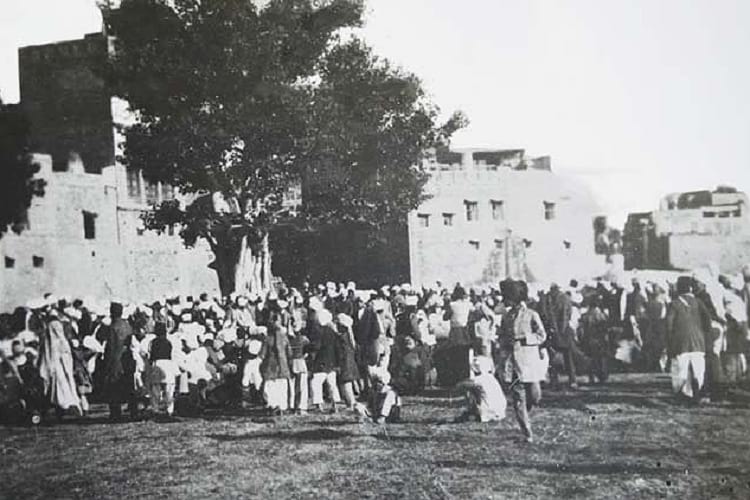
A crowd gathered at Jallianwala Bagh during Motilal Nehru and Pandit Madan Mohan Malaviya’s visit in the late summer of 1919. The meeting is taking place at the same spot as the platform was located on 13 April. (© Penguin Random House India)
The British ruled India for 89 years, from 1858 to 1947, and, while they did have their civilized moments, their rule was marked by wholesale pillage of the once vibrant Indian economy and a callous disregard for the lives of the people they had subjugated. Mr Wagner’s book focuses on an incident that stands out starkly for its sheer brutality in this dark period of Indian history – the massacre that took place in Jallianwala Bagh in Amritsar, Punjab, on 13 April 1919.
On Colonel Reginald Dyer’s orders, the troops from the 59th Sind Rifles, the 54th Sikhs, and the 2-9th Gurkhas entered through the main entrance of Jallianwala Bagh and, taking up position on a high earth bank, fired at point-blank range on their own countrymen. The people gathered in Jallianwala Bagh did not stand a chance, enclosed as they were in the walled Bagh and targeted with indiscriminate firing from guns with .303 ammunition.
“The wounds inflicted by the .303 ammunition had been devastating – at a distance of less than 600 feet, and what was at first practically point-blank range…”

The entrance to Jallianwala Bagh through which Dyer and his troops entered. The photograph shows the southern end of the Bagh, and the small shrine with its onion dome is visible on the left, while the part of the wall to the right is still to be seen at the memorial. Amritsar. (© Penguin Random House India)
The bullets ricocheted from the walls, pierced through people to hit the ones behind them, fragmented to injure all those close by, and even wounded and killed people living in the upper levels of the houses around the area. Many in the neighbourhood initially mistook the firing for fireworks. Of course, the pockmarks appearing on their houses soon wised them to the situation.

Locals inspecting bullet-holes in the southern wall, behind the shrine, in late 1919. This part of the wall no longer exists but would have been just to the left of the palm tree visible in other images. (© Penguin Random House India)
Nobody knows exactly how many people died on that horrendous day. The British afterwards gave out a rather low figure of 379 dead and 1,100 wounded, but the truth of the matter is they never bothered to make a serious count. According to eyewitnesses and the enquiry carried out by Madan Mohan Malviya and Motilal Nehru in the summer of 1919, the number was 1,000 dead and 1,500 wounded. In addition to those killed in the Bagh itself and its outskirts, many more succumbed later to their injuries, and many others suffered life-long from the injuries and the trauma of that day.
‘Jallianwala Bagh: An Empire of Fear and the Making of the Amritsar Massacre’ by Kim. A. Wagner, published by Penguin Random House India Private Limited, is concerned with the shooting and its aftermath, as recounted by those that lived through these events.
The Survivors of Jallianwala Bagh
When the troops finally withdrew from the Bagh, they left behind piles of dead bodies and scores that were dying or wounded. The dead included children as young as three. The Bagh was strewn with people’s belongings.
“After the soldiers had left, I looked round [. . .] There must have been more than a thousand corpses there. The whole place was strewn with them. At some places, 7 or 8 corpses were piled, one over another. In addition to the dead, there must have been about a thousand wounded persons lying there.”
It looked like a devastated battlefield, according to Lala Karam Chand, who survived by hiding in the Hansli drain.
Another survivor, Sardar Partap Singh, went to the drain to get water for a dying man and found dead bodies floating in the drain.
As dusk fell and the news of the shooting spread around the city, the local people hurried to Jalianwala Bagh to search for missing relatives and friends. It was a difficult, painful task that required them to turn over the dead and disturb the dying to find their loved ones. The bullet-ridden bodies had horrific injuries, with eyes and noses shot off, faces smashed, heads split open, chests and backs gaping open, and limbs blown off. It was here, in such a state, that Lala Gian Chand found his 17-year-old nephew Ram Labhaya.
Giridhari Lal, who went looking for his friend Hakim Singh and some young neighbourhood boys, recounted seeing an equally gruesome spectacle. To him, there appeared to be over 1000 dead bodies spread out around the Bagh.
It was getting close to the 8 p.m. curfew and people, afraid of being subjected to another shooting, began hurrying back to the relative safety of their homes. The dead and many of the wounded were left behind, and even though the people in the neighbourhood could hear the wounded moaning in agony and crying for water throughout the night, they didn’t dare to go out to help them.
“While the British authorities in Amritsar and Lahore had been busy throughout the night, the dead remained abandoned and exposed inside Jallianwala Bagh.”
Few of the shell-shocked people had the courage to ignore the curfew and one of them was Ratan Devi. She had spent the evening searching for her husband and it was dark by the time she finally found his body amongst a pile of other bodies. As all the other people in the Bagh had already left by then, she knocked on nearby doors and asked the people living there to help her move her husband’s body. When they all refused, she returned to the Bagh and spent the night at her dead husband’s side, weeping, chasing away dogs with a bamboo stick, and trying to comfort a dying 12-year-old boy.
A City in Mourning
“‘There was nobody present there, to register the number of the dead persons. Within one hour of our arrival in Durgiana, about 70 more dead bodies came for cremation, and others were following.’”
The following day, 14 April, was the day of the traditional Baisakhi Fair. A day to celebrate the harvest. Instead of celebrations, the people of Amritsar held cremations and burials. From dawn until dusk, at the Hindu Durgiana temple near the Lohgarh Gate and at the Muslim burial ground outside the Sultanwind Gate, the processions of the dead continued.

The north-eastern side of the Bagh, with the main entrance on the far left. The people in the photograph are standing on the earth bank from which Dyer’s troops fired. (© Penguin Random House India)
It will be 100 years this April since the Jallianwala Bagh Massacre, but Mr Wagner’s matter-of-fact writing brings the deeply disturbing events alive as though it might have been yesterday. It is still difficult to make sense of the tragedy. While Rudyard Kipling did later claim that Colonel Reginald Dyer ‘did his duty as he saw it’, it seems a quite a worthless duty that calls upon anyone to murder their fellow human beings in cold blood and destroy so many scores of families.
For more details, read the book:

Jallianwala Bagh: An Empire of Fear and the Making of the Amritsar Massacre | By Kim A. Wagner
RELATED
The post The Tragedy of Jallianwala Bagh appeared first on .
]]>